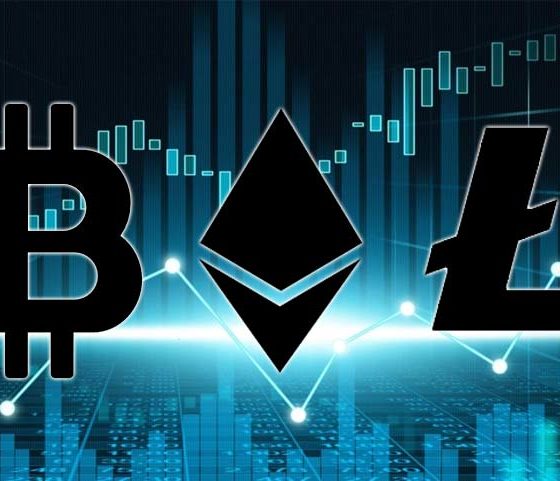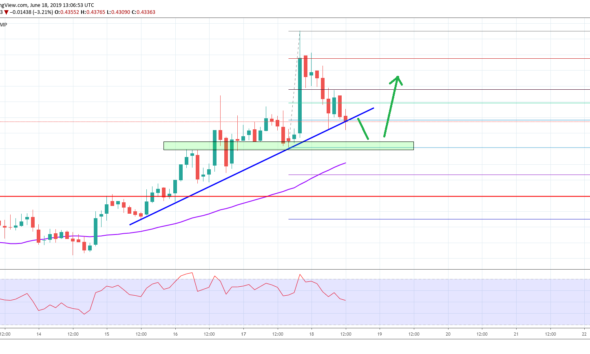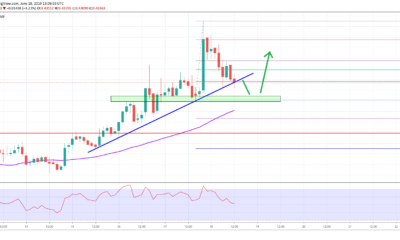MY BITCOIN WELCOMES YOU
Learn About "My Bitcoin" and why it will be the most echoed-expression in the ₿itcoin ecosystem.

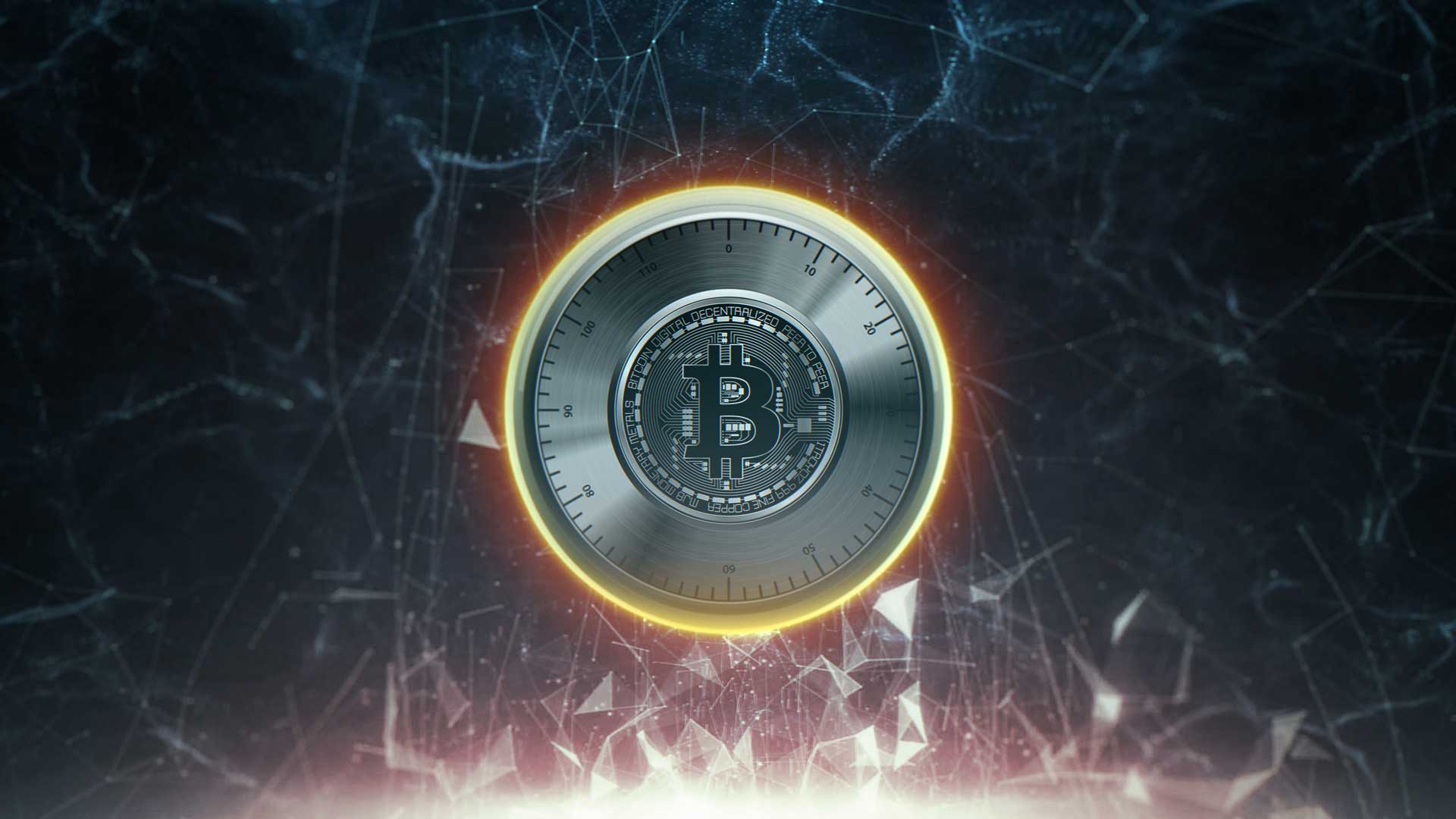


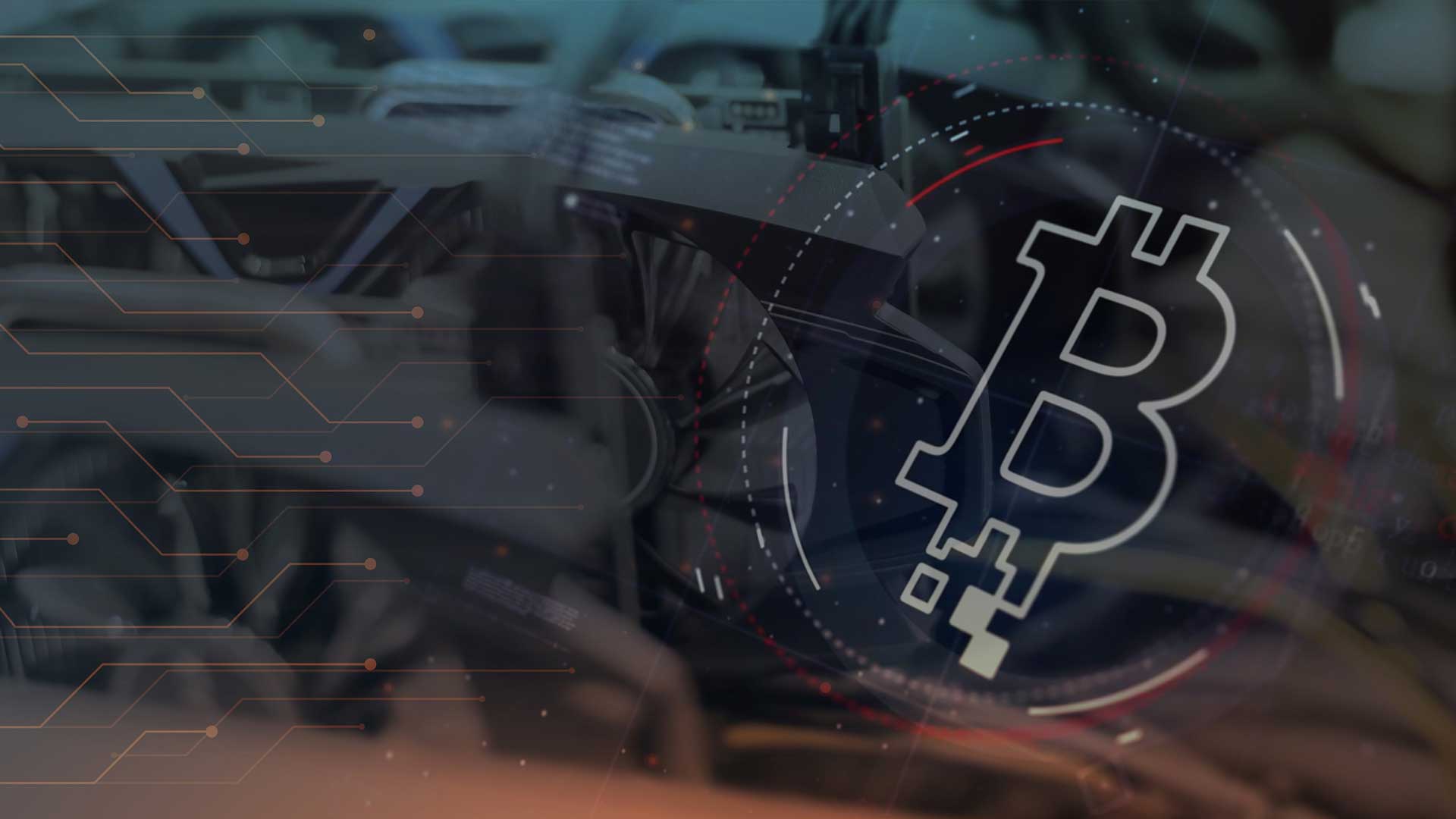
Learn About "My Bitcoin" and why it will be the most echoed-expression in the ₿itcoin ecosystem.
MyBitcoin Knowledge Base: Internet's Leading Investor and Trader User Guides
MyBitcoin Research on All the Top CryptoAsset Trading Platforms







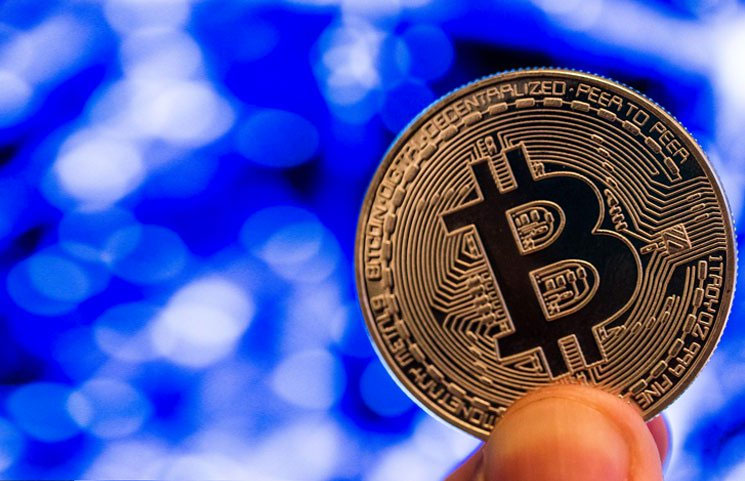











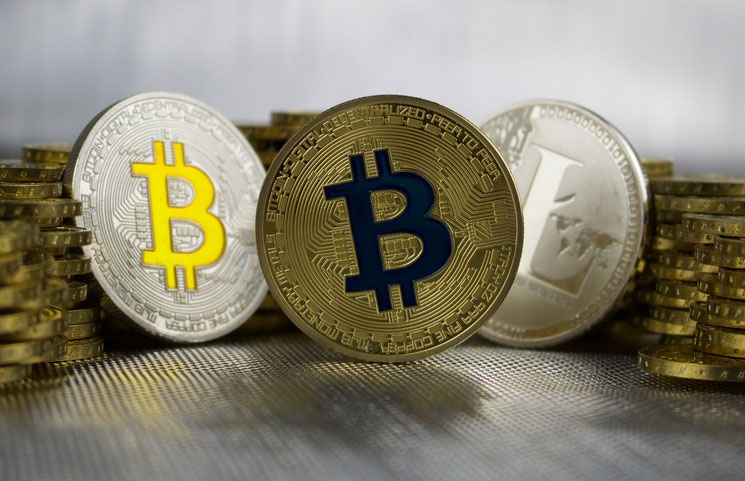





![5 Worst Ways to Raise Cash for 2018 Cryptocurrency Investments [Guide]](https://www.mybitcoin.com/wp-content/uploads/2018/05/5-Worst-Ways-to-Raise-Cash-for-2018-Cryptocurrency-Investments-Guide.jpg)


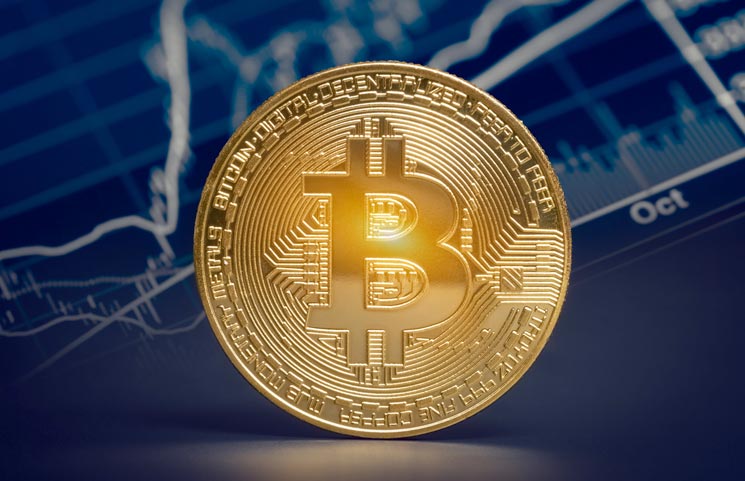

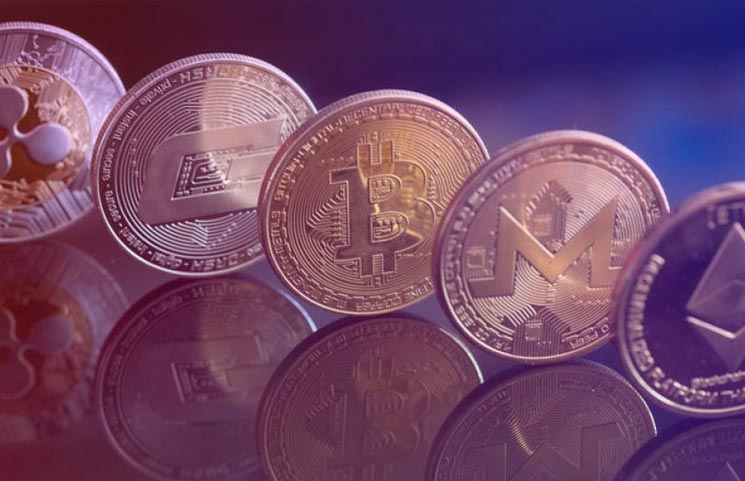
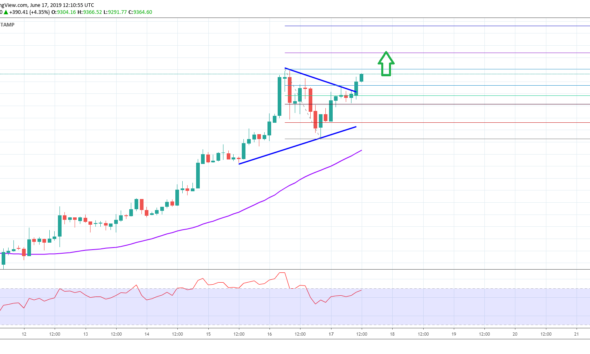
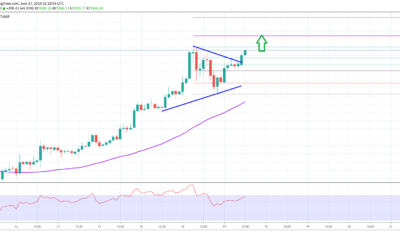
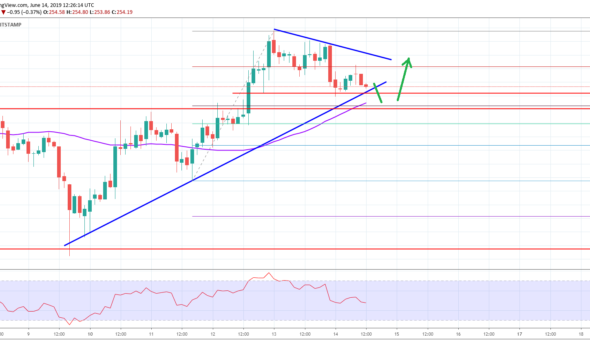
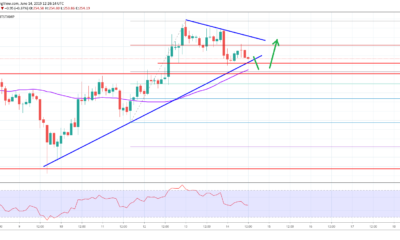
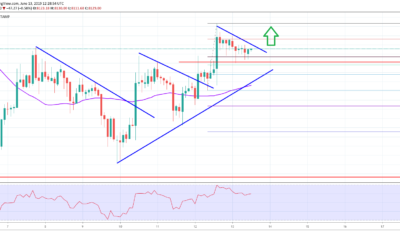



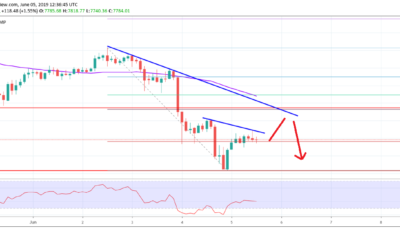

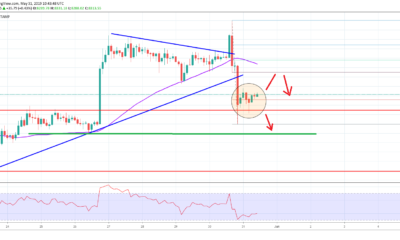







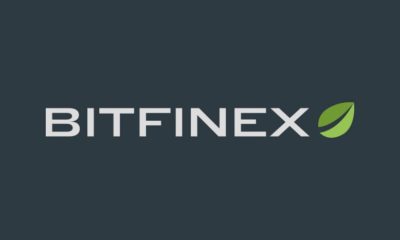





| RANK | SITE | NAME | LOCATION | FRIENDLY | BUY WITH | RATING |
|---|---|---|---|---|---|---|
| 1 |  |
NAME:COINBASE | LOCATION: |
FRIENDLY: |
BUY WITH:Card/BankTransfer | RATING: |
| 2 |  |
NAME:CHANGELLY | LOCATION: |
FRIENDLY: |
BUY WITH:Card/BankTransfer | RATING: |
| 3 |  |
NAME:BINANCE | LOCATION: |
FRIENDLY: |
BUY WITH:Card/BankTransfer | RATING: |
| 4 |  |
NAME:KRAKEN | LOCATION: |
FRIENDLY: |
BUY WITH:BankTransfer/Altcoins | RATING: |
| 5 |  |
NAME:KUCOIN | LOCATION: |
FRIENDLY: |
BUY WITH:Card/BankTransfer | RATING: |
| 6 |  |
NAME:GEMINI | LOCATION: |
FRIENDLY: |
BUY WITH:BankTransfer | RATING: |
| 7 |  |
NAME:XAPO | LOCATION: |
FRIENDLY: |
BUY WITH:Card / BankTransfer | RATING: |
| 8 |  |
NAME:POLONIEX | LOCATION: |
FRIENDLY: |
BUY WITH:CryptoCurrencies | RATING: |
| 9 |  |
NAME:BITTREX | LOCATION: |
FRIENDLY: |
BUY WITH:CryptoCurrencies | RATING: |
| 10 |  |
NAME:GDAX | LOCATION: |
FRIENDLY: |
BUY WITH:LTC & ETH/BankTransfer | RATING: |

How to make big profits by investing in digital currencies. In just a few short years, cryptocurrency investing has gone from a niche hobby to a genuine retirement strategy. Today, a growing number of people of all ages are participating in the “crypto economy” – from 19-year-old college students to retirees. The allure of cryptocurrency investing is obvious. You don’t have to look far online to find stories of people who purchased bitcoin in 2010, forgot about it, and then opened a computer years later to suddenly realize they were millionaires.
The days of bitcoin rising and falling 800% may be over. However, the cryptocurrency investing industry is still in its infancy. There are still plenty of opportunities to make money through cryptocurrency investing. New digital currencies enter the market every day. Most coins will fail and become worthless. Some coins, however, will become the next bitcoin, the next Google, or the next Apple. This book isn’t about giving you “hot stock tips”; Instead, we’re giving you the tools you need to find your own hot cryptocurrencies. We’ll provide an overview of how bitcoin works, how people invest in cryptocurrencies – and how you can make big profits in the exciting world of cryptocurrency investing.
The term “cryptocurrency” first emerged in 2009 with the release of bitcoin – the world’s first cryptocurrency. Cryptocurrency is short for “cryptographic currency”. Essentially, that means it’s money secured by the “cryptography” of encryption.
These currencies are “cryptographic” because they’re secured by public and private keys. These keys are used to “unlock” the encryption protocol. It’s like having a secret password. Without that password, someone can’t accept your money transfer. It’s all secured by the power of math.
The encryption allows developers to encode rules of cryptocurrency within the system itself. Those rules prevent tampering and copying. They prevent someone from “printing off” their own bitcoin. Bitcoin’s rules, for example, ensure that there will never be more than 21 million bitcoins available. These rules cannot be broken because, again, they’re secured by math and the cryptography of the network.
Cryptography involves the use of advanced mathematics. It’s an entire academic field. Some researchers devote their entire lives to cryptography. In the most basic sense, cryptography involves protecting data behind math problems that are really difficult to solve. Picture a bank vault, but instead of metal walls, you have really difficult math equations. That’s cryptography.
Cryptocurrencies are one of the most unique developments to emerge from the world of cryptography. Bitcoin was built on a handful of relatively simple and well-known cryptographic protocols.
Cryptocurrencies initially gained traction as a “counter culture” to fiat currencies. Fiat currencies are currencies like the US Dollar or Euro. They’re the “traditional currencies” we use in today’s world.
Fiat currencies are tied to specific countries – like the United States – or specific regions – like the European Union and the Euro. Cryptocurrencies, however, are not tied to a specific place: they’re truly international currencies that can be securely used anywhere there’s internet.
One of the crucial advantages of cryptocurrencies is the lack of centralized control over the currency. Today, banks and governments control the value of fiat currencies. These centralized organizations can adjust monetary policy (by raising or lowering interest rates) or simply print more money. Both of these things affect the value of a fiat currency.
Today, inflation is an accepted part of our lives. Our fiat currencies suffer from inflation because the total supply of fiat currencies is constantly increasing. If you have $1 today, that dollar bill might buy you a can of soda. 50 years from now, that same can of soda might cost $25. There are more US Dollar bills in circulation, which means the value of your $1 USD bill has dropped. That’s inflation. It’s supply and demand.
Cryptocurrencies don’t work like that. Most cryptocurrencies have a fixed supply. There are only 21 million bitcoins that can ever be created, for example. It’s impossible to “create” more bitcoins beyond this number. This has led to deflation in the price of bitcoin. In 2009, a bitcoin was worth pennies. Today, it’s worth thousands. That’s deflation. Again, it’s supply and demand. As demand increases, and supply stays the same, the price will inevitably rise.
Bitcoin is a decentralized digital currency. It’s not controlled by any single person or institution. Instead, it’s controlled by a set of codes and instructions called the “blockchain”. The best way to think about bitcoin’s blockchain is as a computer program. That computer program was created in 2009 by an individual who went by the alias Satoshi Nakamoto (more on him later).
If somebody created bitcoin’s computer program, doesn’t that mean they control bitcoin? Not really. Bitcoin is more of an open source software program. That means anyone can edit it, improve it, and modify it.
The people who modify bitcoin’s program still don’t control it. That’s because the bitcoin software is installed on millions of computers worldwide. Those computers must achieve “consensus” on changes in the bitcoin blockchain. It’s a democratic system where each computer in the bitcoin network essentially “votes” on different changes. If a proposed bitcoin change doesn’t have enough votes, then it won’t be implemented into the network. It’s as simple as that.
Because of this decentralized voting mechanism, bitcoin is not controlled by any one person. It also means bitcoin isn’t based on any concrete assets. It’s not directly connected to the GDP of any specific government, for example, and it’s not attached to the price of gold, oil, or any other assets. The value of bitcoin comes from the underlying technology.
Bitcoin was the first to use blockchain and encryption in a digital currency. That’s what made bitcoin unique. Today, there are a number of cryptocurrencies that use similar – even superior – systems to bitcoin. Litecoin has faster transaction times, for example, and Ethereum has cheaper transfers. Nevertheless, bitcoin still remains king.
The term “cryptocurrency” is used to define any system that uses cryptography to allow the secure transfer and exchange of digital tokens in a distributed, decentralized system.
Cryptocurrencies can be:
Bitcoin started trading in January 2009. At the time, bitcoin seemed like a niche tool. People agreed it was cool and unique, and that it could be used to pay for stuff online. But few people recognized its long-term potential. Even fewer people understand the importance – and value – of bitcoin’s underlying blockchain. Sure, it was a neat geek toy that could be used to transfer stuff from one computer to another – but it wasn’t going to replace fiat currency anytime soon.
However, people soon came to realize that bitcoin – and other cryptocurrencies – solved two enormous problems in the world of computer science, including the Double Spending Problem and the Byzantine Generals Problem.
The best way to understand bitcoin – and the value of bitcoin – is to realize how bitcoin solved the Double Spending Problem and the Byzantine Generals Problem.
The double spending problem refers to a crucial problem in the online world: it’s impossible for two parties to exchange value electronically without the use of a trusted intermediary – a third party like a bank or PayPal. This is because of the double spending problem. The double spending problem is as old as the internet. It’s the reason we didn’t have a true digital currency until bitcoin.
The double spending problem is easy to understand, but hard to solve. First, think about how a cash transaction works. You visit a deli to buy a sandwich. That sandwich costs $5. You hand the deli shop owner a $5 bill.
The deli shop owner now has a $5 bill, and you do not have that $5 bill. You have a sandwich, and the deli shop owner does not have that sandwich. Either party can verify they have a $5 bill or a sandwich. Both parties can be satisfied the transaction is complete. Thanks to cash, strangers can conduct a face-to-face transaction without a third party intermediary.
Now, think of how that would work online. That $5 bill would be represented as a digital file worth $5. You email a $5 bill to the deli shop owner by attaching that digital file to a message. However, sending that digital file to the deli shop owner doesn’t cause the digital file to be deleted from your computer. Sure, you could promise the deli shop owner that you’ll delete the file from your computer. But that’s not going to work unless the deli shop owner trusts you.
Until bitcoin, the only way to overcome the double spending problem was to use a trusted third party intermediary – like a bank or PayPal. These intermediaries act as a middleman. You send $5 to PayPal. PayPal deducts $5 from your account and sends $5 to the deli shop owner. The middleman charges a cut in exchange for verifying the transaction.
In 2008, bitcoin inventor Satoshi Nakamoto announced that he had solved the double spending problem. He claimed to have created a way to send and receive cash electronically without the need for a trusted third party.
Bitcoin solved the double spending problem through the use of cryptography, peer-to-peer networking, and blockchain technology. Together, these technologies – and others – formed bitcoin, which is essentially electronic cash. This method allowed for the final and complete transfer – not the mere copying – of electronic assets between individuals.
Bitcoin uses a ledger. PayPal and your banks also use a ledger. However, bitcoin’s ledger is distributed – there are multiple sources of that ledger stored on different computers around the world. A distributed ledger is called a blockchain. Essentially, it’s a public document distributed in peer-to-peer fashion across thousands of nodes in the bitcoin network.
When a bitcoin transaction takes place, the new transaction is checked against the blockchain to ensure the same bitcoins have not been previously spent. The thousands of computers in the network do the work of verifying the transaction. This is bitcoin’s “proof of work”, or PoW system in action.
The end result is that bitcoin solves the double spending problem by replacing the trusted third party with a blockchain. That blockchain is secured by encryption and a decentralized network of nodes. It’s not under the control of any one company – like PayPal or your bank.
Bitcoin’s solution to the double spending problem sounds great. However, it leads to another problem called the Byzantine generals problem.
The Byzantine generals problem is a reference to an ancient conundrum. A group of Byzantine generals have besieged a city. The city is surrounded by troops from multiple generals. The generals know that their numbers are large enough to overwhelm the city – but only if at least half the combined force attacks the city simultaneously. If they don’t attack simultaneously, the force will be spread too thin and will be easily defeated. The generals can only communicate via messenger, and they have no way of verifying the authenticity of messages. Some of the generals suspect other generals of being traitors, and the besieged city may issue fraudulent messages to deceive the attackers. How can the large group of generals come to a consensus about the time of attack without a central authority?
This is the problem faced by bitcoin’s miners. Miners are the “nodes” on the bitcoin network. Each miner is one computer on the bitcoin network. The miners are responsible for processing transactions on the network.
If every node on the network has a complete copy of the distributed ledger – the bitcoin blockchain – then how does a new node on the network know that she’s holding a legitimate copy of the network? How does she know that someone hasn’t given her a fake ledger update? There needs to be a way to reach consensus among distributed parties who do not trust each other. Fortunately, Satoshi Nakamoto came up with an elegant solution to that problem.
Bitcoin’s solution to the Byzantine generals problem is to require additions to the ledger to be accompanied by the solution to a mathematical problem. Those mathematical problems are very difficult to solve, but simple to verify. Many compare it to the process of calculating prime factors: it’s costly to do, but easy to check.
With bitcoin, new transactions are broadcasted between peers on the network. Miners look at those transactions and confirm them by checking their copy of the ledger (their version of the blockchain). If the transaction is legitimate (and there are no double spend issues), then the miners add the transaction to a queue of new transactions ready to be added to a new page on the ledger (a new “block” on the blockchain).
While the miners do this, they are simultaneously trying to solve a difficult math problem. That math problem uses all previous blocks in the blockchain as inputs. Eventually, one miner solves the problem. That miner then broadcasts her solution to the network, accompanied by the new block ready to be added to the blockchain.
At this point, all other miners can easily verify that the miner’s solution is correct. Once the other miners verify the correct solution, the block is added to their copy of the blockchain as well.
This process repeats itself. Bitcoin’s math problem takes about 10 minutes to solve. That’s why a bitcoin transaction takes about 10 minutes to be verified. Theoretically, this “block time” will decrease as more miners are added to the network, which means there’s more processing power on the network. To maintain the 10 minute block time, the blockchain adjusts the difficulty of the math problem every 2016 blocks (every two weeks). At the same time, the mining reward halves every 210,000 blocks (every 4 years). In 2009, the bitcoin network rewarded 50 bitcoins with each block. That reward halved to 25 bitcoin, then to 12.5 bitcoin in 2016. This system ensures the total number of bitcoin in circulation will never exceed 21 million.
Why would miners continue mining if the rewards decrease and difficulty increases? Parties completing a transaction can attach a transaction fee paid to miners who successfully add that transaction to a block in the blockchain. So miners can earn transaction fees and earn a block reward.
Today, a number of developers have built digital currencies based on the two unique bitcoin blockchain solutions above. These cryptocurrencies are called “alternative coins”, or altcoins. Altcoins are all based on blockchain technology. Some use the original bitcoin source code. Others use a brand new blockchain created from scratch. Some have been highly modified to a point where they’re unrecognizable from the bitcoin blockchain. Others have added just one or two changes to the bitcoin blockchain.
These altcoins typically use two methods to securely generate new cryptocurrencies: Proof of Work (PoW) or Proof of Stake (PoS). In this section, we’ll provide a brief explanation of how each method works.
Proof-of-work is based on the idea that a user needs to perform work in order to use a certain service. In the cryptocurrency world, that “work” is performed by your computer. The computer (the miner) checks the correctness of a transaction and adds it to the blockchain. The correctness is checked using a huge amount of computing power (which is used to solve the math problems). The miner receives bitcoin in exchange for the work. That’s proof-of-work mining.
One of the biggest issues with PoW mining is that it requires a huge amount of energy. Miners devote computing power to the network, and that computing power requires energy (in the form of electricity). This is one reason why PoS emerged.
Proof-of-stake mining is more energy efficient. With many PoS coins, you don’t even need a high-end computer: you can conduct PoS mining from your wallet. It’s based on a similar concept to PoW mining. Transactions are stored on the blockchain and assigned to a block in a certain order. Whoever holds a certain number of coins in their wallet essentially “slows down” the flow of transactions. The more coins you hold, the greater your participation in receiving randomly distributed coins.
Basically, PoS mining involves letting coins sit in your wallet. This is called “staking” your coins. The more coins you stake, the greater your contribution to transaction verification on the network, and the more rewards you receive.
One of the biggest benefits of cryptocurrencies is the lack of centralization. Fiat currencies have central banks – like the US Federal Reserve or the Bank of Canada – built to control the value of their country’s national currencies – like the US Dollar and the Canadian Dollar.
Cryptocurrencies are governed in a much different way. Instead of being controlled by a centralized, governmental body, cryptocurrencies are often controlled by a decentralized governance structure. The two main governance structures include algorithmic governance and open source governance.
With algorithmic governance, the cryptocurrency has rules embedded within the currency. Typically, these rules run as algorithms on the peer-to-peer software that miners and users run.
With bitcoin, for example, miners compete to process a block of transactions. After a miner validates that block, the miner can claim new coins. However, the miner’s block needs to be validated by other nodes on the network. The block is checked to ensure it aligns with the algorithms encoded in bitcoin. If a miner awards themselves too many bitcoins, for example, then this will be a problem, because bitcoin has a pre-determined number of bitcoins available for each block reward.
With algorithmic governance, the nodes enforce the rules encoded in the cryptocurrency. There’s no need for a central bank: the network acts as a governing organization. Instead of police officers or regulators, the encryption of the network (basically, “math”) ensures everyone obeys the same rules.
The rules for bitcoin don’t emerge from thin air. Instead, the rules are debated, developed, and tested over time by developers. These developers may work independently – like some coder contributing from a beachfront condo in Thailand. Or, they could work in teams, like the Bitcoin Core team. Both types of people have contributed to the bitcoin project over time.
Bitcoin is open source software. That means the code is publicly available online, and anyone is free to download that code, scan it for vulnerabilities, and modify that code. Developers, miners, average users, and even malicious actors have all attempted to contribute to bitcoin over time. However, not all changes get added to the “reference client”.
Some cryptocurrency projects are closed source. Typically, this is frowned upon. It could mean the developers are hiding something – like an enormous number of tokens “pre-mined” for the development team. In other cases, however, the cryptocurrency project could have proprietary features that they don’t want copied across other blockchains.
Closed-source governance is also used in enterprise blockchains – say, when a company has its own private blockchain for use within its corporation. In this situation, you don’t want to open the blockchain up to a worldwide network of developers. Closed source governance allows the corporation to enjoy the benefits of the blockchain while still exercising a degree of control over the platform.
Many people are attracted to bitcoin with promises of easy money. Just like most things in life, there’s no easy money in bitcoin or crypto. Sure, you can get “lucky” by investing $100 in bitcoin in 2009 and have that money be worth $10,000,000+ today.
However, even “holding” bitcoin is a skill. Let’s be honest: if you bought bitcoin at $0.01 in 2009, then watched the price climb to $30 in a few years, then you probably would have sold, right? Many people thought $30 was bitcoin’s peak price. Others thought bitcoin hit the peak at $200, or $1,000, or $3,000. There are people who have held bitcoin through all of these peaks and never sold.
Nevertheless, we want to give you a positive outlook on bitcoin and cryptocurrencies, including the investors who played it smart, got rich, and are now living the lives of their dreams thanks to smart cryptocurrency investments.
In June 2017, CNBC posted a story about a high school dropout named Erik Finman who struck it rich with bitcoin. Erik began investing in bitcoin in 2011 when it was worth just $12 per token. As of 2017, he holds 403 bitcoins – worth over $1 million. Erik told CNBC about how he made hundreds of thousands of dollars a day from investing in single coins. Erik was motivated to invest in cryptocurrency due to a unique bet from his parents: Erik made a bet with his parents that if became a millionaire by age 18, then they couldn’t force him to go to college. Obviously, Erik got his wish.
Some of the craziest stories from the bitcoin community are of people who purchased bitcoin in the early days, only to forget about their purchase until years later. One famous story comes from a Norwegian guy named Kristoffer Koch, who invested 150 Norwegian Kroner ($27 USD at the time) into bitcoin in 2009. Koch purchased 5,000 bitcoins after he discovered the tokens while writing a thesis on encryption. He forgot about them until 2013, when he saw a news report on bitcoin. The news first picked up the story in 2015 when Koch’s investment was worth $900,000. Today, Koch’s 5,000 BTC are worth an astonishing $41,000,000 (based at a price of around $8,000 USD per bitcoin).
Obviously, it’s easy to look at the early stories of bitcoin and think, “Wow, that’s great – but bitcoin is never going to make jumps like that again.” You may be right, but the crypto industry is filled with amazing investment opportunities outside of bitcoin. Reddit user /u/AndrewWheel, for example, posted to the /r/Geek forum in August 2017 with an envious problem. Andrew described himself as “a huge geek in his early 20s” who was “living with his parents”. In January 2017, Andrew deposited his first paycheck into a small, little-known cryptocurrency called AntShares. In August 2017, that cryptocurrency – which later rebranded itself as NEO – was worth $30+ per share. Andrew had earned over $1 million in just a few short months.
Cryptocurrency investing can make you kick yourself for the rest of your life. One of the best examples of that is the infamous bitcoin pizza story. In 2010, an early bitcoin user bought two pizzas with 10,000 bitcoins. When the news picked up the story in May 2017, they reported that those bitcoins would be worth $20 million. As of late 2017, those two pizzas are worth over $82 million USD. Yes, someone legitimately paid over $82 million (in 2017 money) for two pizzas in 2010. That bitcoin user, Laszlo Hanyecz, purchased two Papa John’s pizzas from another bitcoin user in what was widely believed to have been the first “real world” bitcoin transaction. Hanyecz would later explain that “It wasn’t like Bitcoins had any value back then, so the idea of trading them for a pizza was incredibly cool.” Obviously, it’s easy to look back at Hanyecz as a dummy – but in reality, which college student wouldn’t trade some “free” digital currency (at the time) for something they could actually use (like a pizza they could eat)? “No one knew it was going to get so big,” admitted Hanyecz in 2017.
Today, it’s easy to find people in the bitcoin community groaning about how they wish they purchased more bitcoin between 2009 and 2013. It’s easy to get caught up in the whole “hindsight is 20/20” phenomenon. Let’s be honest: a lot of us heard about bitcoin before 2017, but few people actually purchased bitcoin. Those that did buy bitcoin early – and held onto it – are enjoying the benefits today. The rest of us are missing out.
Some people look at this as a reason to get discouraged from the crypto industry:
Here’s the thing: many people said these same thing in 2010 when bitcoin rose to an all time high of $0.01. Others said the same thing when bitcoin achieved parity with the USD in February 2011, hitting the $1 USD=1 BTC mark. Some people said bitcoin was in a bubble when it rose to $1200 USD per BTC, then collapsed to $300 per BTC for over a year until 2014. Ultimately, nobody knows where the currency is going to go – whether it’s going to $100,000 or $10 or anywhere in between. However, if you constantly think “you’re too late”, then you’re already shooting yourself in the foot.
The important thing to remember is that there are opportunities outside of bitcoin. You know how bitcoin surged from a few pennies to a few thousand dollars? Some altcoins have done that in 2017. Others have experienced similar surges in just a few months. New altcoins are being released every day.
Google was founded in 1998, just before the peak of the Dot Com boom. Many people thought Google was late to the party, or that the market was already too crowded. However, some investors still jumped on board because they believed in Google’s technology and their team. I don’t need to tell you what happened next. However, I guarantee the crypto version of Google is out there today – it’s either been founded already, or it’s about to be founded in the near future.
One of the things that makes bitcoin intriguing is its mysterious creator, who went by the pseudonym “Satoshi Nakamoto” online. In the early days, people assumed Satoshi Nakamoto was just some tech whiz or cryptography expert living in Japan. Over the years, however, Satoshi would inadvertently drop clues to his (or her) identity.
Satoshi Nakamoto might be one person. Or, it might be a group of people. Whoever – or whatever – Satoshi Nakamoto is, there’s one thing that’s clear: Satoshi Nakamoto took deliberate steps to obfuscate his identity. Satoshi intentionally tried to prevent people from knowing anything about the person (or people) who created bitcoin.
As of early 2018, nobody has been able to confirm the identity of Satoshi Nakamoto. Several people have come forward claiming to be Satoshi Nakamoto. So far, nobody has been able to prove it.
Whoever Satoshi is, the person still controls nearly one million bitcoins. You can still view these bitcoin addresses online and check the bitcoin blockchain yourself. As the owner of one million bitcoins, Satoshi is worth an estimated $7 billion, making him the most reclusive and mysterious multi-billionaire on the planet.
I don’t know about you, but the mystery of Satoshi Nakamoto is one of my favorite parts about bitcoin and its history – so let’s dive into everything we know about the identity of Satoshi.
In 2009, a figure named Satoshi Nakamoto published the original bitcoin whitepaper on Bitcoin.org. Satoshi remained active in the bitcoin community for several years after the launch of the whitepaper. Satoshi actively contributed to development of bitcoin until mid to late 2010.
Satoshi had a profile on the P2P Foundation website. On that profile, Nakamoto listed some basic biographical details about himself: he claimed to have been born in Japan on April 5, 1975.
However, the internet soon realized that Nakamoto didn’t talk like a Japanese man – even if he was a Japanese man who was perfectly fluent in English. He used English idioms (he said the word “bloody” in numerous points, as in “bloody difficult”, for example). He also had strong use of grammar and punctuation.
Despite the perfect use of English online, the community continued to believe that Nakamoto was a single Japanese man. Many believed he was born in Japan, but may have moved to a country like the United Kingdom, Australia, Canada, South Africa, or New Zealand at a young age – which would explain the use of Commonwealth English. Maybe his parents moved from Japan to another country. Maybe he was born outside of Japan to Japanese parents.
Based of all this information, the early searches for Satoshi focused mainly on computer scientists and cryptographers of Japanese descent living in the western, English speaking world – particularly British Commonwealth countries and the United States.
Satoshi Nakamoto published his historic whitepaper online on October 31, 2008. Satoshi, contrary to what some people believe, didn’t release the whitepaper through Bitcoin.org. He released it through a Metzdowd.com cryptography mailing list. The whitepaper was titled, “Bitcoin: A Peer-to-Peer Electronic Cash System”.
This was the first time the internet had heard the term “bitcoin”. However, there were clues leading up to this date. Satoshi claims he began working on bitcoin in Japan in 2007, for example. On August 15, 2008, an interesting patent application was launched. That patent application described an encryption system. The patent even used a specific term that was identical to a term used in the bitcoin whitepaper. It was filed by Neal Kin, Vladimir Oksman, and Charles Bry, all of whom deny any connection to Satoshi Nakamoto (more on them later).
Here’s where things get interesting: on August 18, 2008, the domain “Bitcoin.org” was registered. The domain was registered through AnonymousSpeech.com, a site that allows users to anonymously register domain names (that site, interestingly, later became one of the first domain registration websites to accept bitcoin as a payment).
After releasing the whitepaper through the cryptography mailing list, Satoshi launched the whitepaper on SourceFourge.net, a popular open source software development website, on November 9, 2008. The outreach of bitcoin grew – although still, very few people knew about bitcoin, and few understood its potential.
On January 3, 2009, the bitcoin Genesis Block, Block 0, was mined. You can view that Genesis Block today. It’s timestamped at 18:15:05 GMT. Because it’s the first bitcoin block, this is the only block that has no prior block to reference. That’s why this block – and this block only – required the use of special code to launch the mining process. After the Genesis Block, the bitcoin code took over.
We know the bitcoin Genesis Block was mined no earlier than January 3, 2009. Why? Well, Satoshi left a text message in the first mined bitcoin block. That text message famously reads, “The Times 3 January 2009 Chancellor on brink of second bailout for banks.” That text refers to a headline in The Times – specifically, the edition that was published on January 3, 2009. Because of that, we know the genesis block was mined no earlier than that date.
By January 12, 2009, version 0.1 of Bitcoin was released. It was compiled with Microsoft Visual Studio for Windows, and it lacked a command line interface.
Here’s where things started to get interesting for the internet’s opinion on Satoshi: the Bitcoin software was so complete, so well-constructed, and so neatly-compiled that many people believed it was impossible for one person to build that software. At this point, some people (again, a rare few) started to believe that Satoshi Nakamoto might not be a single person – but a group of people with significant programming knowledge.
There was another clue: the Genesis Block was unique because it was the first bitcoin block ever launched. However, the subsequent blocks were mined over the next few weeks, and data shows that Satoshi did not try to mine all of the early blocks solely for himself – he had help. Nevertheless, Satoshi – as the sole, dominant, early miner – was awarded an enormous amount of bitcoin during the early days of the blockchain’s creation. That’s why Satoshi has one million bitcoin today (worth over $7 billion in 2017).
In any case, version 0.1 of the Bitcoin software included a generation system that ensured the creation of 21 million total bitcoins through the year 2140.
One of the biggest clues in the history of bitcoin is the world’s first bitcoin transaction. On January 12, 2009, in block 170, the very first bitcoin transaction took place. The transaction was sent from Satoshi’s address to a man named Hal Finney. Finney was a developer and cryptographic activist. We’ll talk more about Hal later on.
By October 5, 2009, the first bitcoin exchange rate has been established. During this time, a platform called the New Liberty Standard published a bitcoin exchange rate. At this point, the price of bitcoin was valued at $1 USD=1309.03 BTC. The exchange rate was calculated based on the amount of electricity required to run a miner at the time.
Satoshi would issue a number of updates on the project until mid-2010. At this point, bitcoin’s code and updates had been posted on open source communities across the internet. A number of developers had become familiar with the code and how bitcoin worked.
In mid-2010, Satoshi handed over control of the bitcoin source code repository and network alert key to a programmer named Gavin Andresen. At the same time, Satoshi transferred several related domains to various prominent members of the bitcoin community. After doing this, Satoshi abruptly stopped any involvement with the project. He stopped posting online. He stopped contributing to the code. He disappeared from the internet entirely.
From mid-2010 onward, people have been dedicated to discovering the identity of Satoshi Nakamoto. A number of people have come forward, and you can find clues to his (or her) identity across the internet.
In the early days, the community believed that Satoshi Nakamoto was a 37 year old Japanese cryptography/computer science expert. The community had no reason to doubt Satoshi’s profile, which stated that he was a 37 year old man born in Japan. Why would someone lie about that? However, it quickly became apparent that Satoshi might not be a single Japanese man.
One of the most obvious clues was that Satoshi would regularly use British English spelling and terminology in his forum posts and source code nodes. Satoshi would occasionally use terms like “bloody hard” in reference to a problem, for example. This led to the belief that Satoshi – or at least one of the people representing Satoshi online – was of British Commonwealth origin.
Researchers uncovered another clue to Satoshi’s identity – or at least his geographic location. Stefan Thomas, a Swiss coder and an active member of the early bitcoin community, graphed the time stamps for each of Nakamoto’s bitcoin forum posts (he posted more than 500 times). The resulting chart showed a surprising trend: Satoshi almost never posted between the hours of 5am and 11am Greenwich Mean Time, even on Saturdays and Sundays. This posting time led people to assume that Satoshi slept, in general, between 5am and 11am GMT, assuming that Nakamoto was a single person with ordinary sleep habits.
Based on this information, Stefan Thomas assumed that Satoshi lived in a part of the world using the UTC-5 or UTC-6 time offset. This included North America’s Eastern Time Zone and Central Time Zone. It also included parts of Central America, South America, and the Caribbean.
Some people believe Nick Szabo is Satoshi Nakamoto. In December 2013, a blogger named Skye Grey linked Nick Szabo to the bitcoin whitepaper. Grey’s clue? A process called “stylometric analysis”. Basically, Grey looked at Satoshi’s writing style and use of language, then noticed similarities with Satoshi’s writing style from his 1500+ forum posts and the original bitcoin whitepaper.
Another link between Satoshi and Szabo is that Szabo has a proven track record as a support of decentralized currencies. Long before bitcoin was released, for example, Szabo published a paper on “Bit Gold”. Szabo also used pseudonyms on the internet throughout the 1990s.
Szabo also appeared to have been around during the early days of bitcoin. In a May 2011 article, for example, Szabo was asked about Satoshi Nakamoto. Here’s how he responded: “Myself, Wei Dai, and Hal Finney were the only people I know of who liked the idea (or in Dai’s case his related idea) enough to pursue it to any significant extent until Nakamoto (assuming Nakamoto is not really Finney or Dai).”
Ultimately, there’s a lot of circumstantial evidence showing that Szabo is Satoshi – but there’s no proof. Szabo has also publicly denied being Satoshi. After being “doxed” as Satoshi in 2014, Szabo sent an email to an investigative journalist saying, “…you got it wrong doxing me as Satoshi, but I’m used to it.” Later, the New York Times would report that “the most convincing evidence [of the identity of Satoshi Nakamoto] pointed to a reclusive American man of Hungarian descent named Nick Szabo.”
One of the funniest stories in the bitcoin community is the story of Dorian Nakamoto. In March 2014, a journalist named Lea McGrath Goodman from Newsweek identified a man named Dorian Nakamoto as the real Satoshi Nakamoto. Dorian’s full name wasn’t Dorian Nakamoto: his full name is Dorian Prentice Satoshi Nakamoto. He’s a Japanese-American man living in California, and his birth name is – quite literally – Satoshi Nakamoto.
Goodman was convinced that she had identified the mysterious bitcoin creator. Goodman pointed at a number of “facts” that “proved” Dorian “Satoshi” Nakamoto had invented bitcoin. Nakamoto had been educated as a physicist, for example, and had worked as a systems engineer on classified defense projects. He was also an accomplished computer engineer for technology and financial information services companies. In the 1990s, Goodman mentioned, Satoshi had been laid off at least twice, at which point he embraced libertarianism. Nakamoto’s daughter has issued statements explaining his father’s distrust for the government during this time period – which seems consistent with the theme of the bitcoin project.
Goodman’s most damning evidence came from an interview that she purportedly conducted. Goodman wrote that she had asked Dorian Nakamoto about bitcoin during a brief interview. Dorian responded saying, “I am no longer involved in that and I cannot discuss it. It’s been turned over to other people. they are in charge of it now. I no longer have any connection.”
After the story was published, there was a flurry of media interest in Dorian Nakamoto. Reporters were seen chasing Dorian’s car as it left his house, for example. In a follow-up interview, Dorian vehemently denied any connection to bitcoin. He claimed he never heard of the currency before, and that he had misinterpreted Goodman’s interview question as being related to his previous military contracting work (much of that work was classified). He didn’t understand the interviewer was asking him specifically about bitcoin.
Nakamoto would later host an “Ask Me Anything” interview on Reddit. In that Reddit AMA, Dorian’s answer seemed to have changed: again, Dorian claimed that he had misinterpreted Goodman’s question, but this time, he claimed he misinterpreted as being related to his work with Citibank.
Here’s where things get wild. Later the same day of the Reddit AMA, Satoshi Nakamoto’s P2P Foundation account posted its first message in over 5 years. That message simply stated, “I am not Dorian Nakamoto.”
That may sound crazy, but it’s probably not as crazy as it seems. It’s generally accepted that Nakamoto’s P2P Foundation account had been hacked, and that the message was not sent by him. Still, it remains an intriguing part of Satoshi’s mysterious lore.
Hal Finney was a pre-bitcoin cryptography pioneer. You may recognize Hal’s name from earlier: he was the first person involved in a bitcoin transaction. The very first bitcoin transaction was sent from Satoshi Nakamoto to Hal Finney. Hal was also the first person to use the bitcoin software, the first person to file bug reports, and the first to make improvements to the software.
Here’s where things get wild (again): Hal Finney lived a few blocks away from Dorian Nakamoto (yes, the same Dorian Prentice Satoshi Nakamoto we mentioned earlier). That info was spotted by Forbes journalist Andy Greenberg.
Andy Greenberg later hired an analysis company to compare a sample of Hal Finney’s writing with the posts of Satoshi Nakamoto. They found that it was the closest resemblance they had ever come across (that same company had previously analyzed the writing of other purported Satoshi figures, but nobody’s writing had a match as close as Hal Finney’s).
Following the writing analysis, Greenberg didn’t definitively claim that Hal Finney was Satoshi Nakamoto. Instead, Greenberg theorized that Finney could have been a ghostwriter for Nakamoto. However, he also claimed it was possible that Finney had used his neighbor Dorian Nakamoto’s identity as a pseudonym for his online exploits.
Greenberg eventually interviewed Hal Finney. Greenberg met Finney face-to-face, viewed the emails between him and Nakamoto, checked his bitcoin wallet history (including the very first bitcoin transaction, which Finney claims he forgot to pay back to Satoshi), and heard Finney deny that he was Satoshi. After the interview, Greenberg concluded that Finney was telling the truth. He no longer believed that Finney was Satoshi Nakamoto.
Hal Finney died on August 28, 2014.
Craig Steven Wright is an Australian computer programmer. To date, Craig Wright is the only notable person who has publicly claimed that he is Satoshi Nakamoto. In December 2015, Wired wrote that Craig Wright “either invented bitcoin or is a brilliant hoaxer who very badly wants us to believe he did.”
Just hours after that Wired story hit the internet, Wright’s home in Gordon, New South Wales was raided by a team of 10 Australian police officers. Wright’s office in Ryde, NSW was also searched by police. Australian law enforcement officials later announced that they had conducted searches on request of the Australian Taxation Office, claiming that the matter was “unrelated to recent media reporting regarding the digital currency bitcoin.” Gizmodo later reported that Wright had been involved in a dispute with Australian taxation authorities for several years. That dispute was unrelated to bitcoin.
In May 2016, Craig Wright issued a public blog post where he claimed to be Satoshi Nakamoto. That same day, the BBC and The Economist both released articles stating that they saw Wright signing a message using the same private key linked to the first bitcoin transaction (the transaction that occurred between Satoshi and Hal Finney). Two other people saw Wright sign the private key in separate incidents, including Jon Matonis (former director of the Bitcoin Foundation), and bitcoin developer Gavin Andresen.
Unfortunately, Wright’s blog post – and its cryptographic proof – was disputed. Bitcoin developer Peter Todd claimed that Wright’s blog post contained no actual proof of his link to Satoshi, stating that “there is currently no publicly available cryptographic proof that anyone in particular is Bitcoin’s creator.” Jeff Garzik, another well-known bitcoin developer, agreed with Todd, stating that Wright’s evidence didn’t prove anything. Some called Wright a scam artist, with security researcher Dan Kaminsky calling Wright’s supposed proof “intentional scammery”.
In May 2016, Wright posted additional blog posts where he promised to publish additional proof of his identity as Satoshi. On May 5, 2016, just one day after he published those blog posts, Wright deleted all of them and replaced them with an apology letter titled “I’m Sorry”. Here’s what Wright said in that blog post:
“I believed that I could put the years of anonymity and hiding behind me. But, as the events of this week unfolded and I prepared to publish the proof of access to the earliest keys, I broke. I do not have the courage. I cannot.”
Many people took that as an admission that Craig Wright was attempting to deceive the community, and that the internet had called his bluff. He couldn’t produce the proof.
You may recognize Andresen’s name from earlier in the book. In mid-2010, when Satoshi decided to stop working on bitcoin, Satoshi handed control of the project – including the open source code and public profiles – to a man named Gavin Andresen. Andresen is an Amherst, Massachusetts-based software developer who, prior to bitcoin, specialized in 3D graphics and virtual reality development. Andresen would later found the Bitcoin Foundation in 2012, and he has worked on the project full-time since 2014.
Again, here’s where things get interesting. In November 2016, Andresen stated that Craig Wright (the Australian computer programmer we just mentioned) was the real Satoshi Nakamoto. Andresen later retracted that statement. He also implored the world to ignore Wright, and claimed that he was leaving the “Who was Satoshi” game permanently to spend his time “on more fun and productive pursuits.”
Andresen has not contributed to Bitcoin Core since February 2016. His Github commit access was revoked in May 2016.
You don’t have to look far online to find people who have been linked to Satoshi Nakamoto. Some of the other suggested Satoshi Nakamotos include:
Dr. Vili Lehdonvirta: A journalist from The New Yorker identified Finnish economic sociologist Dr. Vili Lehdonvirta as Satoshi Nakamoto. Dr. Lehdonvirta strongly denied the claim.
Michael Clear: That same journalist from The New Yorker identified Michael Clear, a graduate student at Trinity College Dublin, as Satoshi Nakamoto. Michael Clear, like Dr. Lehdonvirta, strongly denied the claim.
Neal King, Vladimir Oksman, and Charles Bry: You may recognize these names from earlier in the book. These are the three people who filed a patent just two months before the launch of the bitcoin whitepaper. These three jointly filed a patent application containing the words “computationally impractical to reverse”. That same exact phrase was used in the bitcoin whitepaper. The Bitcoin.org domain was registered just three days after the patent was filed. All three men have denied being Satoshi Nakamoto.
Shinichi Mochizuki: Someone claimed in 2013 that Satoshi Nakamoto was Shinichi Mochizuki, a Japanese mathematician. Details of this claim aren’t totally clear, but it appears Mochizuki has refuted the claim.
Ross William Ulbricht: If Ulbricht’s name seems familiar, then you probably recognize his name from the infamous darknet market called Silk Road, which ran from 2011 until Ulbricht’s arrest in 2013. Some people on the internet seem to think Ulbricht is the real Satoshi Nakamoto. Two Israeli mathematicians named Dorit Ron and Adi Shamir published a paper indicating a link between Nakamoto and Ross William Ulbricht based on a suspicious pattern of bitcoin transactions. The two later retracted that claim.
Satoshi Nakamoto may have been a single person. Or, he could have been a group of people. Many believe Satoshi is a combination of one or more people mentioned above.
There’s a lot of evidence that Satoshi is a group of people. The major evidence is the scale of the project. If Satoshi was a single person, then he (or she) was (or is) undoubtedly a genius. Many have expressed that bitcoin’s code is too well designed to have been created by a single person. The same names also seem to frequently appear as being involved with the project, leading to the theory that it wasn’t a single person – but a group of people – working on bitcoin.
If you’re a conspiracy theorist who distrusts everything in the world around you, then this theory is going to freak you out: some people think that Satoshi Nakamoto was created by the NSA, the CIA, the SEC, or some other government agency. In May 2017, website TruthHawk.com published a blog article asking, “Is Bitcoin A Government Project?”.
The argument for bitcoin as a government project goes like this:
These conspiracy theorists generally argue that bitcoin was created by the US government in particular. The US government saw the upcoming decline of the US Dollar as an international reserve currency. Instead of trying to prevent that decline, they made something completely different called bitcoin.
Others believe that Satoshi Nakamoto is a product of the Russian government. Some believe the Chinese are behind bitcoin, and others believe it’s Japan, North Korea, Kazakhstan – whoever.
There are a finite number of billionaires in the world today. As of November 2017, there are 1,542 people with over $1 billion to their name. Most of these people have Wikipedia pages. They’re well-known people involved with well-known projects. It’s tough to make a billion dollars without being in the public eye in some capacity.
Satoshi Nakamoto is the exception – and that’s why he’s most intriguing. He’s the world’s most reclusive billionaire. He has taken steps to conceal his identity. From the very first days of the bitcoin project, he has taken deliberate actions to ensure it would be difficult to trace his identity.
Ultimately, part of the allure of bitcoin is the origin story – and Satoshi Nakamoto is the reason why that origin story is so cool to read about.
The blockchain is a distributed ledger containing all transactions for a particular cryptocurrency. Bitcoin has its own blockchain, for example, and Ethereum has its own separate blockchain. These decentralized ledgers are publicly viewable, and anyone can view every transaction that has ever taken place on the bitcoin network.
Bitcoin was launched in 2009. However, it took several years for people to recognize the potential of bitcoin’s underlying technology: the blockchain. The underlying blockchain technology is far more important than the cryptocurrency on top of it – bitcoin.
Some have compared it to the discovery of steam power and the steam engine. Steam power was initially used for niche industrial tasks. Within years, however, the technology was being to transform everything from transportation to agriculture.
Blockchain technology has already disrupted the financial industry through the creation of cryptocurrencies. However, blockchain could also disrupt many other industries – including the financial industry and many others. Today, you can find thousands of “blockchain startups” entering the market. These startups want to disrupt virtually everything – from online dating to the food supply chain – using blockchain technology.
Here’s the reason blockchain is important: it can be used to securely sign any digital object. If a particular object can be recorded digitally, then it can be written on a blockchain. If it can be written on a blockchain, it can be kept beyond the reach of centralized authorities and malicious attackers.
Think of the food supply chain. You want to know if your wine legitimately came from an organic, fair-trade vineyard in Australia. You check the blockchain. You can see an immutable record of the entire process from grape-picking to bottling. The grapes are picked in a vineyard in Australia, then placed into a container. That container has a QR code. Before the container is placed onto a truck, a smart device scans the QR code. A record of that transaction is stored on the blockchain, including a timestamp and geolocation for the transaction.
The grapes are taken to a processing and bottling facility. A scanner scans the box on arrival at the facility, then records a timestamp and geolocation onto the blockchain. Once these grapes are processed and bottled, they’re shipped to your local retailer.
All of this information is recorded onto the blockchain. To check that information, you use your phone to scan the QR code on the side of the wine bottle you just picked up at the grocery store. You can check the freshness of your wine. You can see the date the grapes were picked. And you can verify your wine came from a fair trade, organic facility in Australia.
This system also prevents fraud. We know that it takes 10,000 organic, fair trade grapes to make a single bottle of 100% organic, fair trade wine. The blockchain might show that the processing facility only recorded an input of 1,000 organic, fair trade grapes. This tells us that the bottle isn’t 100% organic and fair trade. Inputs have to match the outputs, and all of this can be checked with the blockchain.
Blockchain has limitless potential. Here are some of the industries blockchain could disrupt – or has already disrupted.
Any Supply Chain Industry: We just talked about how blockchain can be used to track wine from the early stages of grape picking to the final stages of bottling. Any industry with a supply chain has the potential to be improved with blockchain technology. Blockchain can be used to optimize efficiency and improve accuracy.
Online Voting: Most countries today do not have online voting. It’s too difficult to secure an online voting system. However, blockchain could change that. It creates immutable proof of each citizen’s vote, verified and available for anyone to see.
Land Registries: Today’s land registry system is weirdly outdated. Pieces of paper and vulnerable digital records are used to register ownership of land – one of the world’s most valuable assets. Blockchain can provide proof of land ownership, tracked over time with a complete record of all transactions.
Financial Payments: Today’s leading blockchains can securely process millions of transactions per second. This is a big deal to banks and credit card companies, who are actively researching blockchain implementation for customers.
Loyalty Programs: Blockchain is being used to create universal rewards and loyalty programs. Retailers and customers can view an immutable record of all transactions into and out of the loyalty program, providing better management and lower costs.
Stock Market Trades: In July 2015, NASDAQ announced plans to experiment with blockchain technology, using blockchain as a way to record transactions across the stock market.
Contracts: Ethereum’s smart contracts could disrupt the entire legal world. Smart contracts are a secure way for two individuals to engage in any type of agreement. The smart contract records the terms of that agreement on the blockchain, that automatically executes a command – say, sending payment – when specific terms are met.
Cloud Storage: Blockchains are being used as a distributed storage system. Companies can use blockchain to replace – or complement – cloud storage. Data is stored across a distributed network, which prevents anybody from having a centralized server to attack.
We could literally write a book about the potential uses for blockchain technology. The space is vast – and we’re just getting started. Think of the early days of the internet. How many industries were disrupted by the internet? Banking, travel, shopping, gambling…all of these industries experienced enormous changes. Blockchain is expected to have a similar effect across many aspects of the world.
Blockchain can have enormous benefits across a wide range of industries. Some of the core benefits of blockchain technology include security, decentralized governance, and transparency:
Today, companies store data in centralized servers. These servers are enormous targets for hackers. Every year, another major corporation – from Yahoo to Equifax – gets caught exposing millions of customer records to the public. Blockchain solves this problem with a decentralized storage system, where encrypted data is stored on thousands of nodes worldwide. There’s no centralized point of failure. Even if someone attacks one node, they would only get a single, encrypted bit of data. Without other data from thousands of other nodes, the data is meaningless.
Blockchain’s immutability also means reduced fraud. Companies with a central database often deal with fraud. An employee with access to the database can easily go back and alter a record from years ago, for example, to fudge numbers or erase an event. Governments can use this to control history. Corporations can use it to deceive investors. With blockchain, an immutable record is placed on the blockchain where everyone can view it – and nobody can alter it.
There are private and public blockchains. Private blockchains are controlled by a centralized entity. However, both private and public blockchains have a layer of protection between centralized authorities and anyone viewing the blockchain. The lack of centralized authority means blockchains can be free of regulation, censorship, and other problems.
One of the biggest benefits of blockchain technology is in its ability to launch cryptocurrencies like bitcoin. Bitcoin and other cryptocurrencies are the international currencies we need for an international economy. There are limited transaction costs. You can use bitcoin in every country worldwide. You don’t need to exchange USD to EUR and pay foreign exchange rate fees just to do business with a European supplier. Without blockchain technology, currencies like bitcoin would not exist.
We’ve seen countless technological innovations that promise to change the world – but ultimately fail to deliver. Blockchain won’t be another Segway. However, it’s not a perfect technology. Some of the drawbacks include:
Blockchain won’t exist in a world without the internet. Sure, the internet is probably not going away unless we go through a nuclear war. However, there are countries – like Iran, China, and North Korea – where citizens have highly-restricted access to the internet. The government might not be able to control the blockchain. But theycan control the internet. And that’s basically the same thing.
One of the biggest criticisms about bitcoin is that the network requires a lot of energy to operate. Specifically, bitcoin’s proof of work (PoW) algorithm requires the combined processing power of thousands of nodes. Ideally, that processing power comes from renewable energy sources like wind and solar. Regardless of where the energy comes from, however, it still requires an enormous amount of electricity to run all that processing power.
Countries and banks are currently experimenting with blockchain technology. It’s possible that these organizations will launch their own blockchains. These blockchains won’t work in the same way as bitcoin’s blockchain. They’ll be under the governance of a central authority. Blockchains, by nature, are distributed – but that doesn’t necessarily mean every aspect of the blockchain is decentralized.
Blockchain idealists might tell you that decentralization is a good thing. However, it’s not always a good thing. Sometimes, when you need to get a project completed, you need strong leadership. You need a central authority guiding everyone. A decentralized development team isn’t always an efficient development team.
We’ve spent most of this book talking about bitcoin’s blockchain. At this point, you understand the value of bitcoin’s blockchain and why it was revolutionary.
But many people label bitcoin’s blockchain as “blockchain 1.0”. It was the original blockchain. Ethereum, created by Russian-Canadian wunderkind Vitalik Buterin in 2013, has been called blockchain 2.0.
Ethereum, at a fundamental level, functions in a similar way to blockchain. It allows users to make secure transactions on a decentralized, publicly viewable blockchain. However, Ethereum’s biggest feature is something called “smart contracts”. Smart contracts are essentially pieces of programming recorded onto the blockchain. These smart contracts – the programs – can be executed by any computer running the Ethereum software in exchange for Ethereum’s native currency called “Ether”. The end result is the creation of an enormous distributed computer available for anyone to “rent” in exchange for that native currency.
Smart contracts have already changed the legal industry. Today, two parties can conduct a secure transaction over the Ethereum blockchain by entering into a smart contract with one another. These smart contracts don’t need to trust each other, and they don’t need to trust a centralized authority (like a bank) in order to make a secure transaction. These parties can enter into a business agreement over the blockchain. The terms of that agreement are recorded into the smart contract. The smart contract executes when certain conditions are met.
One of the most well-known uses for smart contracts on the Ethereum blockchain is through the launch of initial coin offerings, or ICOs, as a fundraising method. Today, companies can easily issue their own digital currency through an Ethereum smart contract. Some of the world’s largest digital currencies are now found on the Ethereum blockchain. People send money to the smart contract, and the smart contract sends a digital token in return. Those digital tokens could represent a share in the company (like a stock or security) or they could simply be used as a utility token (like an in-platform currency) for an upcoming blockchain company.
Ethereum wasn’t just notable for its use of smart contracts: it was also notable for its PoW algorithm, which functions differently than bitcoin’s. Ethereum will eventually migrate to a Proof of Stake (PoS) algorithm at some point in the future.
Ethereum hit a major stumbling block in 2016 with the disastrous project known as The DAO (The Decentralized Autonomous Organization). The goal of The DAO was to create a hedge fund-like structure. Investors send money into the fund, then vote on where that money should be invested. It sounded like a great idea. It was such a great idea that investors poured $150 million into the fund. Unfortunately, The DAO was hacked. It exposed a major vulnerability in Ethereum’s smart contract system. A hacker escaped with nearly $50 million in investor funds. This led to a hard fork of the Ethereum blockchain, which led to the release of Ethereum (ETH) and Ethereum Classic (ETC), two separate currencies both built on the same original blockchain (more on that later).
Ultimately, bitcoin, Ethereum, and all other blockchain technologies are changing the world on a daily basis. Next, we’ll look at why they’re making such an enormous impact.
We talked about the benefits of blockchain technology above – including why it could have an enormous impact on industries worldwide. But this book isn’t just about blockchain. It’s about bitcoin.
Why is bitcoin such a big deal? It’s a currency built for the global economy. Looking back, it’s hard to imagine how it took until 2009 for bitcoin to emerge. Bitcoin has a bright future in the global economy. Here are a few of the reasons why:
Today, central banks worldwide control fiat currencies like the Euro and US Dollar. These banks regulate the flow of money. Essentially, that means central banks control every single dollar that goes into and out of a particular country. This gives central banks enormous control over each currency. Bitcoin, on the other hand, decentralizes control. No single organization is in charge of bitcoin.
We live in a global economy. Unfortunately, our money isn’t global. To do business in Japan, you need to transfer your Euros into Japanese Yen. To receive payment from a Chinese company, you need to transfer Chinese Yuan into US Dollars. This creates an unnecessary barrier in international business, as companies pay fees to transfer between currencies. Bitcoin, on the other hand, has no borders. It can be used in every country in the world. You can send money from Kuwait to Zimbabwe for a tiny transaction fee. Whether you’re in Kuwait or Zimbabwe, you can use the same bitcoin to buy a cup of coffee – or a house.
Today, the world’s most powerful countries have strong fiat currencies with a stable value. The USD, EUR, and CNY are all good examples. Unfortunately, not all countries have stable national currencies. Some countries – like Zimbabwe and Venezuela – experienced hyperinflation in their national currencies. This led to them adopting stable alternatives like the USD. However, these countries are now starting to recognize the value of bitcoin. Venezuela, for example, has become one of the world’s largest bitcoin-using countries on a per capita basis. It’s easy to see how other countries could follow suit. Soon, we may even have a country declare bitcoin as its national currency.
Bitcoin has a fixed supply of 21 million bitcoin, with about 16 million units currently in circulation. The remaining bitcoins are scheduled to be mined at decreasing rates until 2140. This fixed supply is unlike any other currency in the world today. National currencies, meanwhile, do not have a fixed supply. Central banks print more currency on a regular basis. This leads to inflation. The $5 bill in your wallet today is worth less tomorrow, assuming supply continues to outpace demand. We take inflation as a natural part of economics. In reality, however, bitcoin is quickly revealing itself to be a powerful deflationary currency: a fixed supply with increasing demand leads to higher prices for bitcoin over time.
Bitcoin is easy to store. You can store bitcoin on a piece of paper, if you want. You can use a USB drive. You can even use a bank vault (you just put your hard drive, USB drive, or piece of paper inside a bank vault). If you’re smart about bitcoin storage, then your bitcoin is impossible to steal or lose.
Bitcoin transactions come with fees. Fees are paid to the bitcoin network. Throughout bitcoin’s history, fees have been consistently low. They’re especially low when you compare bitcoin to today’s other international payment solutions. PayPal charges fees of about 6% to accept a payment, then convert it into your local currency. International remittance services charge similarly high fees. These fees go to centralized corporations that act as the middleman. Bitcoin, on the other hand, has no middleman. The bitcoin blockchain is a replacement for the middleman.
Plenty of altcoins have similar benefits to the ones listed above. Many altcoins actually have faster transactions and lower fees than bitcoin. However, bitcoin has one major advantage: it’s the world’s best known cryptocurrency. It has enormous support from a team of developers worldwide. Thanks to bitcoin’s decentralized governance, anyone with a good idea can contribute to the bitcoin network and improve it. Ultimately, that means bitcoin has enormous benefits today – but it might have even better benefits in the future.
Ultimately, all of the features listed above make bitcoin a strong competitor to today’s banking system. It’s cheaper. It’s decentralized. It’s internationally available and usable. It doesn’t require middlemen to function. These are just a few of the reasons why bitcoin is revolutionizing the world.
Buying your first bitcoin might seem like a big deal. Believe me – I was there once too. Fortunately, buying bitcoin isn’t nearly as difficult as it was in 2009. Today, there are more exchanges than ever before. These exchanges accept a wide range of deposit methods – from bank transfers to credit cards. Most countries and regions also have their own exchange – so whether you’re using Canadian Dollars or Japanese Yen, you’ll find a cryptocurrency exchange happy to accept your fiat currencies.
While you’re buying your first bitcoin, why not buy your first Ethereum too? Today, it’s rare to find an exchange that specializes exclusively in bitcoin. Most exchanges make it easy to purchase Ethereum, Litecoin, Bitcoin Cash, Bitcoin, and other major cryptocurrencies from your same account.
There are literally hundreds of cryptocurrency exchanges. Coinbase tends to be the most popular one for Americans. QuadrigaCX and Coinsquare are the two biggest ones in Canada. Bithumb and Coinone are the two largest cryptocurrency exchanges in Korea.
Here are the top 10 most popular bitcoin exchanges according to data on Coinmarketcap. Some exchanges are only popular in certain countries, in which case we’ve highlighted the country beside the name of the exchange:
If you don’t see a specific country beside a particular exchange, it means that exchange is available in multiple markets with multiple deposit methods. Most exchanges, at a minimum, accept USD for fiat deposits (say, via credit card, bank transfer, and other methods). Many also accept EUR.
Most countries have their own bitcoin exchanges. These privately-run exchanges allow you to trade more obscure currencies in exchange for bitcoin and other cryptocurrencies. You can avoid exchanging your money into USD or EUR if you don’t already hold those currencies. More importantly, you can access local exchange methods – like easy bank transfers using your country’s most popular exchange platform.
Here are some of the national crypto exchanges available in major countries around the world:
If you don’t see your country listed (i.e. the UK, the United States, South Korea), it means you can use virtually any popular exchange. The exchanges listed above are for those in smaller countries with smaller demand.
Don’t see your country listed? Want to avoid the verification requirements of an exchange? Want to buy bitcoin for cash? You can do all of those things – you just need to find a trader willing to accept whatever form of payment you have. LocalBitcoins.com is one of the best ways to do that.
LocalBitcoins.com is an online service where you can find various bitcoin sellers in your country. Anyone can post an offer, and anyone can accept that offer. You might find someone in your city willing to meet up and perform a cash/bitcoin transfer, for example.
Or, you might find someone willing to take a personal cheque, accept a bank transfer, or complete payment in other ways.
One of the most important reasons to use Local Bitcoins is when you want to purchase bitcoin anonymously. When you buy bitcoin through an exchange, then send your bitcoin to your wallet from that exchange, then your bitcoin is permanently linked to your name (including whatever ID documents are held by that particular exchange). With Local Bitcoins, you might be able to buy bitcoin with cash, then transfer the bitcoin to an anonymous wallet. Your personal identity is never linked with your wallet. That’s a big deal for some people.
Worried about Mt. Gox? You should be. The Mt. Gox attack is an infamous event in bitcoin’s history. During the early days of bitcoin, Mt. Gox was the most popular bitcoin exchange platform on the internet. Headquartered in Japan, the exchange processed approximately 70% of all bitcoin transactions at the time. The exchange was trusted and reliable. Many people confidently stored a significant amount of their bitcoin holdings in their Mt. Gox wallets.
In early 2014, Mt. Gox lost 850,000 bitcoins belonging to customers. 200,000 bitcoins were eventually recovered. To this day, nobody is really sure what happened to Mt. Gox – whether it was hacked or an inside job, or whether it was a security flaw or greedy management. What we do know is that Mt. Gox lost an enormous number of bitcoins for its users. Mt. Gox would eventually file for bankruptcy.
Why am I telling you this story? Because it illustrates an important point in the bitcoin community: never leave a significant amount of any cryptocurrency in any exchange.
If Mt. Gox – seen as the largest, most reputable exchange at the time – lost that many bitcoins, then anyone can. When you purchase bitcoins from an online exchange, you don’t have full control over your bitcoins or your private keys. To regain that control, you’ll need to withdraw your bitcoins to a wallet – like a cold storage hardware wallet or a hot wallet on your computer.
When you have a $20 bill, you store that bill in your wallet and put it in your pocket.
When you have 1 bitcoin, you store your bitcoin in a wallet as well. With bitcoin, you can choose to store it in a hardware wallet (cold wallet) or an online/software wallet (hot wallet).
Basically, the purpose of a wallet is to secure your bitcoin private key. The wallet – which is just a digital storage folder or hard disk – holds your private key in secure storage.
If you hold a significant number of bitcoins (i.e. more than you’re willing to lose), then you need to get a hardware wallet or cold wallet. Trezor and Nano are the two most popular hardware wallet brands, although a number of competitors have emerged over the years. These wallets are essentially USB sticks. You plug them into your computer when you’re ready to access your bitcoin. Then, when you want your bitcoin kept secure, you unplug your hardware wallet. Some people leave their hardware wallets in a safe. Others keep them on a keychain.
Popular cold storage wallets and hardware wallets include:
All of these wallets work in a similar way. You connect them to your computer whenever you need to access your bitcoin, then enter some type of verification code. With the Trezor, for example, you enter a PIN on the front screen of the device when you connect it to your computer. If you don’t enter that PIN, you can’t access the wallet. Right now, there aren’t significant differences between the hardware wallets listed above. They’re all similar in terms of price, design, security, and usability. They’re all great options.
Meanwhile, hot wallets or software wallets refer to wallets that are on your computer or mobile device. There are a number of popular bitcoin wallet apps for Android and iOS, for example. Mycelium is one of the most popular options. Copay is another. All of these wallets offer a user-friendly (and free) way to store your bitcoin on any mobile device. the most popular software wallets and apps include:
Most bitcoin wallet apps are available for both iOS and Android. You can download all of the above apps for free from their respective app stores.
There are also paper wallets, which store your private key on a piece of paper. As long as you have that piece of paper, you can recover your bitcoin at any time. That piece of paper represents a place on the bitcoin blockchain that nobody else can copy.
Paper wallets are among the most popular ways to store bitcoin. However, they can also be confusing for those who are new to the bitcoin community. Think of it like this: a bitcoin wallet consists of two “keys”. There’s the public key, which is your wallet address (the address people send bitcoins to) as well as the private key, which is what allows you to send bitcoins from your wallet to other people. The combination of a private and public key makes cryptocurrency transactions possible.
If someone obtains the private key for your wallet, then it’s possible for them to withdraw your funds. If you hold your private key in a software wallet or an online wallet, it’s possible for someone to steal your private key – say, if they use something like a keylogger. Even if your PC is secure and air gapped (disconnected from the internet), your private key could fall victim to a hard drive crash or theft.
That’s why paper wallets are an excellent solution. A paper wallet is a document that contains a copy of your private and public key. Often, that paper wallet will have a QR code that allows you to quickly scan it, then add it to your wallet. Alternatively, you can literally copy a paper wallet by hand (although you’re not going to be able to draw a QR code by hand).
With a paper wallet, your keys are not stored digitally anywhere. That means they’re not subject to cyber attacks or hardware failures. As long as that piece of paper remains safe (say, in a bank vault or personal safe), you own a piece of the bitcoin blockchain.
So you understand the importance of bitcoin wallets, and the different types of wallets you can use to secure your bitcoin. What’s the next step? The next step is to buy bitcoin using that wallet.
Buying bitcoin with an online wallet is easy. With an online wallet, a third party is holding your private and public key. When you buy bitcoin from a centralized exchange, you’re buying bitcoin with an online wallet. The process of acquiring bitcoin is extremely easy: you just use that online service to complete the transaction. However, your bitcoin is only as secure as the online service. Buying bitcoin with an online wallet is usually as easy as buying any product online. You enter your credit card information or deposit funds through a bank transfer, then buy bitcoin for your online wallet. The bitcoin appears immediately in your online wallet for that service.
Software wallets are bitcoin applications that reside on your computer or smartphone. You have control of your private and public key. Your bitcoin is as secure as your computer or smartphone. However, most software wallets and apps have some type of backup feature – like a 12 word phrase you can use to recover your bitcoin in the event of theft, damage, or loss of the device. Buying bitcoin with a software wallet gives you more flexibility. You can meet someone in-person to perform a peer-to-peer transaction. You can use a website like LocalBitcoins to arrange a bank transfer or in-person cash transfer, for example, then accept bitcoin from that individual in real-time. Alternatively, you can buy bitcoin from an exchange or online service, then transfer it to your software wallet.
Buying bitcoin with a paper wallet is as easy as printing off the key information. You can buy bitcoin with a paper wallet using any bitcoin ATM: they’ll print off a bitcoin paper wallet for you. Alternatively, you can perform the steps listed above, then print the key information off. At this point, you can delete your software wallet and recover your bitcoin at any time using your private key. There’s software to make printing paper wallets easier – so you don’t have to type out all of the characters or try to draw a QR code (good luck).
Of course, you don’t have to buy bitcoin to get your first bitcoin. You can also minebitcoin. This involves downloading a mining client – like the Bitcoin Core software. This software is a full node, which means it contains a full version of the bitcoin blockchain (over 140GB in size). Download this software to a high-end PC, then start mining. Today, mining isn’t nearly as profitable as it was during the early days. The process is dominated by mining companies with thousands of rigs. However, hobby miners still have options – like joining an online mining pool. With a mining pool, your computer processing power is contributed to a pool with other users, then you receive a proportional share of the block reward.
Anyone can mine bitcoin as long as they have a computer and an internet connection. Bitcoin was originally designed to be easy for anyone to mine. Today, however, the difficulty is high to a point where only high-end miners with access to cheap electricity can mine. Mining is resource intensive by nature: it requires a significant amount of resources in order to break encryption. We explained the mining process – and block rewards – up above, so we won’t go into further detail here. However, unless you’re preparing to invest over $4,000 in a specialized miner, bitcoin mining isn’t really accessible to the average consumer.
You don’t have to spend money to get bitcoin. Today, bitcoin is a worldwide transfer of value. You can get bitcoin for doing all sorts of different things – like performing a service online, building a website for someone, or helping someone. Some forums and social media sites – like Reddit – support cryptocurrency tipping. Other freelancer platforms allow users to use bitcoin to pay for products and services. Some platforms will even give you bitcoin – or other cryptocurrencies – in exchange for viewing ads or completing surveys.
Bitcoin has exploded with growth over the last few years. A growing number of major financial organizations now treat bitcoin as a legitimate financial instrument. It’s an investment vehicle with enormous growth rates and huge potential. That’s why you’ll find a growing number of financial products that treat bitcoin as an investment opportunity.
These financial products typically work in a similar way: the company has a fund containing a bunch of bitcoin. They sell shares in that fund to investors. Investors don’t actually own any bitcoin – they just own a share of a fund containing bitcoin.
Some funds are actively managed. A management team will sell bitcoin when it’s high, then buy bitcoin when it’s low. Through this method, the fund can “beat the market” and enjoy stronger gains than they would gain through just holding. This is called “active management”.
There are also passively managed bitcoin funds. Passive management funds work in a similar way, but without the active trading. The funds contain a certain supply of bitcoin, and investors can purchase shares of that fund. Sometimes, a passively managed fund will be rebalanced to reflect market cap changes. Otherwise, the fund remains largely untouched.
So you’ve got some amount of bitcoin in your wallet. What’s the next step? What can you do with bitcoin? Should you just hold it, then check back in 5 or 10 years? Should you actively trade your bitcoin? Can you exchange it for goods and services? Well, you can do all of those things with your bitcoin. Here are some of the broad uses for bitcoin once it’s in your wallet.
Today, it’s easier than ever to spend your bitcoin. You can load your bitcoin onto a debit card, then spend it anywhere. A growing number of online services now offer bank-like features. You create an account, order a debit card (a physical card or virtual card), then stock that debit card with bitcoin. Stocking your debit card is as easy as depositing bitcoin into your debit card company’s app. Once you’ve done this, you can spend your bitcoin anywhere – if a retailer accepts ordinary debit cards, then they accept your bitcoin debit card as well.
Companies do this in different ways. Some stock your card with bitcoin and charge a fee for the exchange rate on each transaction, anywhere in the world. Others stock your card with USD based on the amount of BTC you deposited onto the card at the time of deposit.
Many people view bitcoin as an investment. If you’re treating bitcoin as an investment, then your best option is to hold it and secure it. Keep your bitcoin in a paper wallet or another secure solution. Then, sit back and hold it. People who bought and held bitcoin from 2009 to 2013 are reaping the rewards of their investments today. Of course, some believe bitcoin is going up to $100,000 or $1 million – in which case buying and holding today is an even better investment.
The first rule of investing is to diversify. In the early days of bitcoin, there was only one cryptocurrency: bitcoin. Today, there are literally thousands of alternative cryptocurrencies, or altcoins. Consider depositing your bitcoin into an exchange to purchase altcoins. Whether it’s a big cap currency like Ethereum, Litecoin, or Dash, or niche altcoins like ERC20 tokens for ICOs, the altcoin market has a trove of investment opportunities available.
There are a number of different ways to store your bitcoin. Up above, we briefly mentioned paper wallets, online wallets, software wallets, and hardware wallets. These are the four broad categories of wallets available to bitcoin users today.
However you store your bitcoin, it’s important to remember one thing: your bitcoin is just a simple code on the blockchain. You never actually have your bitcoin. What you have is a private key that gives you access to that particular part of the bitcoin blockchain. The private key is a string of letters and numbers that unlock access to your bitcoins, allowing you to transfer it to someone else.
When you’re storing your bitcoin securely, you just need a way to securely store that string of letters and numbers. That’s all a wallet is. With that in mind, let’s take a look at online wallets, software wallets, hardware wallets, and paper wallets – including the pros and cons of using each for bitcoin storage.
Online wallets are typically offered as part of an online service. Most exchanges have an online wallet. You deposit money into the exchange, and you can check your bitcoin by signing into your online account at any time.
Remember: at one point, the vast majority of bitcoin trading was taking place on Mt. Gox. It was the most trusted, most powerful, and most liquid exchange in the world. Mt. Gox got hacked, and thousands of bitcoin users lost their funds. No bitcoin exchange is “too big to fall”. That’s the risk of storing your bitcoin in an online exchange.
Online wallets are best used for short-term bitcoin storage for upcoming tasks – say, if you’re about to exchange bitcoin for an altcoin or buy something with bitcoin online. Otherwise, this is the least secure storage option for bitcoin.
Also called software wallets, computer and phone-based wallets come in the form of software or apps. You download a bitcoin wallet like Mycelium for your Android or iOS device, then transfer funds to that wallet. When you setup the wallet for the first time, you’ll have the option to create a backup – like a 12 word passcode. If your device gets lost, stolen, or damaged, then you can recover your funds on any other device using the backup passcode.
Software wallets are a much safer place to store your bitcoin than an online wallet. However, users still need to be cautious, and they’ll need to educate themselves on security risks to ensure their funds stay safe.
Offline wallets come in a few different forms. For the purpose of this book, however, we refer to offline wallets as cold storage devices – which are basically USB devices specially designed to store your private key. These cold storage devices are extremely secure, but also a little bit risky: if you lose access to the device, then you might permanently lose access to your bitcoin.
Cold storage devices and offline wallets made by Trezor, Ledger, and other manufacturers are ideal long-term storage solutions for your bitcoin. You can keep your wallet in the most secure location in your home – like a fireproof safe or a bank vault.
Paper wallets are a type of offline wallet. However, they deserve their own category. Some people believe paper wallets are the most secure way to store bitcoin. Others avoid paper wallets entirely.
Paper wallets put you in full control of your bitcoin. If you lose access to your bitcoin, you have nobody to blame but yourself. There are no third parties involved, no devices to manage, and no software to get hacked. It’s just a piece of paper representing your stake on the bitcoin blockchain.
A few years ago, many people suspected bitcoin could have the potential to change the global economy. Today, we’re watching bitcoin change the global economy on a daily basis.
Bitcoin is becoming increasingly mainstream. Online and offline retailers now accept bitcoin for more services than ever before.
Today, we’re in the midst of the revolution. Buying into bitcoin today means you’re getting in at the early stage of adoption. Sure, most people have already heard about bitcoin. However, most people don’t yet use bitcoin – or any cryptocurrency for that matter. Despite the numerous benefits, cryptocurrency remains a niche financial product. If you buy into bitcoin today, you’re still participating in the early stage of bitcoin’s adoption.
A good example of the power of bitcoin is with businesses. Businesses that accept bitcoin get an edge over their competition. Businesses can add bitcoin payments, then welcome bitcoin users to their establishment. This is particularly valuable if you’re seeking to add a young, tech-oriented bitcoin clientele to your business (although today, bitcoin users come from across demographics, and it’s unfair to say that bitcoin is just used by tech geeks).
The best way to assess bitcoin’s value in the global economy is to judge its use as “money”. By most definitions, money must meet three core functions:
Today, bitcoin meets two of those three qualifications.
Bitcoin provides free transactions over the internet, anywhere in the world. It’s a universal currency that can be transferred with minimal fees. You can exchange bitcoin to buy products or services, for example. You can use it to buy a drink at a bar in London, or to buy a house in Dubai.
Bitcoin is best-known as a store of value. In fact, it’s become so common as a store of value that many people compare bitcoin to gold: you buy it specifically to hold onto it, with the expectation that it will act as a safe store of value over time. The “hodl” bitcoin crowd sees bitcoin as a store of value.
This is where bitcoin falls short of functioning like traditional money (at least in 2017). Today, bitcoin is rarely used as a unit of account. We don’t typically see prices listed in denominations of bitcoin. If someone tells you that an item is priced at 0.00616 BTC, we don’t recognize that number as having concrete value. Obviously, this could change in the future as bitcoin gains acceptance. However, we’re not quite there yet.
The entire banking industry was built on the idea that we need a secure place to store our money. Banks also have another important job: they facilitate secure transfers between two individuals who would otherwise not trust each other. Plus, banks arrange loans by connecting people who want to generate returns (by holding money in a savings account) with people who need money (and are willing to pay to borrow that money).
Here’s the thing: bitcoin can replace all of these things and render the banking industry obsolete. In fact, bitcoin could make the entire modern financial industry obsolete. We’re already seeing the rise of crypto banks and blockchain-based financial institutions. These could be the financial institutions of the future.
Banks Are Centralized, While Bitcoin Is Decentralized: Banks keep all their money in a centralized location (a vault). Decisions about the bank are made by a centralized party (the management team or board of executives). All customer data is contained on centralized servers. Bitcoin, meanwhile, decentralizes everything.
Banks Have High Overhead Expenses, While Bitcoin Does Not: Banks spend money on physical vault space. They spend money on tellers. They need to pay for a bureaucracy, for security, and for all of the other costs associated with running a bank – like lights, heating, and physical ATMs. Bitcoin has no such overhead expenses.
Banks Are Subject to Censorship and Regulations, While Bitcoin Is Not: Banks can face pressure from governments in whatever country they’re operating. They need to meet certain rules and regulations. Sometimes, this is a good thing – like when a customer’s money is protected from the actions of a sleazy bank. In other cases, censored banking systems are a bad thing – like when legal marijuana dispensaries can’t keep money in federal banks because of federal laws against marijuana. Bitcoin is not controlled or regulated by any government, and you secure your own funds.
Banks Are Not Transparent, While Bitcoin is Totally Transparent: Bitcoin’s blockchain allows you to see every transaction that has ever taken place on the network. You can view your transaction to a company in real-time, or check the blockchain to make sure you received payment for a product or service. Banks, meanwhile, have limited transparency. Banks take your money, then lend it out to other customers. You never really know what your money is doing, and you just trust that your money will be there when you withdraw it.
Banks have been researching blockchain technology for years. Some banks have already tested blockchain technology. Ultimately, it seems likely that banks will adopt some of the benefits of the blockchain. For now, however, bitcoin maintains a number of advantages over banks – and that’s why it’s posing a major threat to the banking industry.
In this book, we’re trying to present an impartial view on bitcoin. We give you the facts, and you can make up your own mind about bitcoin. Obviously, bitcoin is far from perfect. Some believe it’s the currency of the future, while others think it’s going to be another passing fad that nobody will remember 20 years from now. Some of the reasons bitcoin may not replace traditional banks and fiat currencies include:
Transparency Isn’t Always a Good Thing: Transparency is good for some things – like when a merchant needs to confirm that you’ve paid your bill. It’s not good for others – like when you’re buying two extra large pizzas and breadsticks for yourself on a Friday night. Do you really want that transaction broadcasted to the world?
Lack of Centralized Development Leads to a Lack of Progress: One of the benefits of bitcoin is that anyone can contribute to the project. It’s an open source protocol, and miners vote on which version they like best. However, decentralized development isn’t always a good thing. Sometimes, it leads to a lack of progress. When multiple sides can’t agree on something, it prevents the project from moving forward. We’ve seen examples of this with the Bitcoin Cash hard fork as well as the abandoned SegWit2x upgrade.
Security Risks: This one’s obvious. Banks are subject to regulation, including things like FDIC, which guarantees customers access to their funds (up to a certain limit) if the bank fails. With bitcoin, you can lose access to your funds. Exchanges can get hacked. If you mess up – like by losing access to your keys – there’s no bitcoin customer service department to help you out.
Ultimately, it doesn’t seem like cryptocurrencies are going away any time soon. However, it’s unlikely that banks or fiat currency will disappear in the near future either. Eventually, we expect the lines between the two platforms to blur, with bitcoin becoming more accessible and banks embracing digital currencies.
Before 2011, bitcoin was seen as a niche online toy for nerds. Sure, it was cool that you could transfer money worldwide. Yes, some people made money off of buying and selling bitcoin. But nobody really recognized its potential as a world-changing financial instrument.
Today, people haven’t just made $10 or $20 from bitcoin. Instead, they’ve made millions of dollars from bitcoin. Some people today continue to hold thousands of bitcoin – they have money they can spend whenever they need to use it, and their investment has grown several thousand percent since buying into bitcoin. Some people today have legitimately been able to retire on bitcoin. Others are preparing for their own future retirements by investing in bitcoin.
Obviously, it’s no secret that bitcoin is a new wealth building instrument. Today, a growing number of people – both young and old – see bitcoin as an investment. There are generally two types of bitcoin investors:
The Get-Rich-Quick Investor: These people heard stories about the few people who purchased bitcoin for pennies back in 2009, only to become millionaires today. These people are buying bitcoin then waiting for it to jump to $100,000 or $500,000, but they often have little understanding of how it works.
The Hodl Investor: “Hodl” is one of the best-known memes in the bitcoin community. One bitcoin user originally typed “hodl” as a typo in an online forum. The term caught on. Today, “hodl” is a rallying cry for bitcoin users who refuse to sell, and continue watching their bitcoin grow over time. As of 2017, “hodling” has been the best possible bitcoin strategy. “Buying the dips” and “hodling” has made more money than selling bitcoin.
Investing in bitcoin comes in a few different forms. You can purchase bitcoin yourself. You can buy bitcoin funds. Or you can build your own fund.
Buying Bitcoin Yourself: The easiest way to invest in bitcoin is to buy bitcoin yourself. There are no management fees, no ongoing maintenance requirements, and no hassle. You’re responsible for storing your bitcoin, buying it, and selling it.
Buying Into a Bitcoin Fund: Passive and active bitcoin investment funds are an alternative bitcoin investment vehicle. These funds typically charge a small fee (say, 0.50% or higher) and maintain a basket of bitcoins on your behalf. You buy a share of this fund, then receive a cut of any profits collected by the fund. In this model, you typically don’t own the bitcoin yourself. The management company retains control of your private keys at all times.
Building your Own Diversified Fund: Want to invest in bitcoin without the management fees? You can create your own diversified crypto fund. It’s as easy as buying the ten largest cryptocurrencies by market cap. You might want to buy an equal amount of each, or diversify your portfolio with different weights (say, 30% for BTC, 30% for BCH, 20% for ETH, and the rest among Litecoin, Dash, Ripple, and other market cap leaders). You’ve now got the benefits of a crypto investment fund with none of the risks.
Investing in bitcoin is relatively cheap. Compared to other investments available today, it might actually be one of the cheapest in terms of your return on investment. Unlike with mutual funds, there are no management fees. Unlike with stock trading, there are no fixed fees per-trade (although you typically pay a small commission to the exchange on trades). Here are some of the fees you can expect when investing in bitcoin:
Deposit Fees (2% to 5%): You need to transfer money from your bank account, credit card, or other account to buy bitcoin. These fees can range from 2% to 5%, depending on your bitcoin purchase method. If you’re depositing funds via cryptocurrency, you might not pay anything (say, if you already own bitcoin and you’re depositing it into an exchange).
Transaction Fees (0.3% to 0.5% Per Transaction): Most exchanges charge a fee for trades. Typically, there’s a maker and a taker fee. The maker fee is paid by the person offering a trade on an exchange, while the taker fee is paid by the person who accepts that trade. Fees typically range from 0.1% (on the low end) to 1% (on the high end), with most fees ranging between 0.3 and 0.5%.
Hardware Wallet (Optional) ($80 to $250): Some people choose to secure their bitcoin on a hardware wallet. A good hardware wallet costs between $100 and $150, although cheaper and more expensive options are available as well.
Management Expenses (Optional) (0.50% to 5%): If you buy a share of a bitcoin fund, then there may be management expenses associated with your account. Typically, management fees are transparently disclosed upfront and range from 0.50% to 2%. Some active managed funds charge a performance fee based on annual profits. We’ve seen fund charging as much as 30% as a performance fee – which means 30% of all profit generated by the fund goes towards the fund’s management team.
Cryptocurrency can be a worthwhile investment. We’ve all heard stories of people who struck it rich with bitcoin, buying lots of bitcoin for very little.
Of course, cryptocurrency trading and investing isn’t just restricted to bitcoin. Bitcoin is the world’s most popular – and best known – cryptocurrency. It still goes through wild price fluctuations – but we’re not likely to see the days of bitcoin being worth under $100 again anytime soon. The days of five digit percentage gains on bitcoin are probably over.
However, there are still plenty of cryptocurrencies that could be “the next bitcoin”. Meanwhile, bitcoin continues to grow steadily over time, and it remains one of the most stable cryptocurrencies on the market.
All of these things combine to make cryptocurrency a possible investment vehicle. A growing number of people – including individual investors and institutional investors – are buying into cryptocurrency. Investing firms report that high net worth individuals are diversifying their portfolio with cryptocurrency. We’ve seen reports of high net worth individuals putting 1% of their net worth into cryptocurrency, for example, just to gain some exposure to the exciting world of crypto investing.
Obviously, cryptocurrency investing is no sure thing. It’s a highly speculative market. The prices for any asset – including bitcoin – can and will fluctuate wildly. Security is also an issue – whether you’re in charge of your own private keys, or you’re buying from an exchange. For all of these reasons, it’s crucial that you never invest more than you’re prepared to lose. In fact, you can reasonably prepare to lose everything.
If that didn’t scare you off, let’s take a look at investing in bitcoin.
The price of bitcoin is based on a simple, time-honored combination: supply and demand. Price increases when the demand increases. Unlike with fiat currencies, where more money can be printed, or banks can raise interest rates to adjust demand, bitcoin isn’t subject to monetary policy. There’s a fixed supply of bitcoin (only 21 million bitcoin will ever be in existence). When demand for bitcoin goes up, the price of bitcoin will inevitably increase.
Buy the Dip and Hodl: We mentioned “hodling” earlier. To date, “buying the dip” and “hodling” has been the best long-term bitcoin investment strategy by far. The price of bitcoin continues to rise steadily over time. If you sold bitcoin last year, you lost money compared to where the price of bitcoin is at today. When you look for bitcoin investing tips online, you’ll often see “buy the dip and hodl” as the most popular strategy – and for good reason.
Use an Exchange, Not a Broker: Unless you’re a high net worth individual, you should buy cryptocurrencies using an exchange and not a broker. Brokers aren’t just professional investment firms with fund managers: crypto brokers also include platforms like Coinbase, which charges high fees in exchange for a more convenient purchase process. If you have even a basic understanding of computers, you’ll have no trouble buying cryptocurrencies through an exchange – and you’ll save a lot of money on fees by doing so.
Decide If You Want to Go Long or Short: As an investor, it’s your job to take a position on the price of an asset. With cryptocurrencies, that means you’re deciding to go long or short. Are you investing in a coin to make a short-term profit? Or are you buying as a long-term investment strategy – thereby taking a “long” position? Decide whether you want to go long or short, then invest based on that position.
Consider Dollar Cost Averaging for a Long Position: If you’re taking a long position, then consider dollar cost averaging. Dollar cost averaging helps you avoid the risks of a poorly-timed trade. Instead of investing $10,000 in bitcoin today at the current price, you invest $1,000 in bitcoin every month over a 10 month period. Whether the price of bitcoin goes up or down, you’ve averaged the cost of bitcoin over the course of a year.
Keep Cash in your Account: You can’t buy the dips if you don’t have cash in your account. When the market is high, consider selling off a bit of your gains (or adding more money to your account) to be prepared if the market dips.
Diversify: We’ll talk more about diversification later on. Suffice to say, diversification is as important in the crypto world as it is in the ordinary investment world.
Realize that a Diversified Investment Portfolio Means Lower Losses as Well As Lower Gains: So you’ve diversified your investment portfolio. Instead of having $10,000 in bitcoin, you have $3,000 in bitcoin and $7,000 in altcoins. Now, when the price of bitcoin doubles in a month, you don’t have $20,000 – you have $6,000. Diversifying your portfolio means minimizing your losses, but it also means reduced exposure to gains.
Stick with your Strategy: Crypto investing requires strong nerves. You need to be able to hold when the market drops, and you need to keep a cool head when the market is hot. There are people who have held bitcoin since 2010 and 2011 and have never sold. When you look at the rises and falls in the crypto industry since the early days, you’ll understand how impressive that strategy is.
Pump and Dump Schemes Are More Common in the Crypto World: Pump and dump schemes will send the price of a coin skyrocketing – only to have it plummet back down a short time later. Today, there are entire communities (including Telegram groups) dedicated to launching pump and dump schemes. Suddenly, forums like Reddit and social networks like Twitter and Facebook will be flooded with “buy” signals from people. These people have bought the currency at a low price, and are now pumping the value of the currency online. Once the price rises, they sell with a tidy profit. Pump and dump schemes are as old as the investing world, but they’re more common in the crypto community.
Never Invest More than You Can Afford to Lose: Above all, don’t invest more money than you can afford to lose. Even if you’re the best investor in the world, the exchange might lose all your money. You don’t want to become homeless because of a security flaw on a crypto exchange.
Bitcoin arbitrage trading refers to the practice of buying bitcoin at a low price on one exchange, then selling it for a higher price on one exchange. This practice remains common to this day, although it’s far less profitable than it used to be. Typically, you can only make profit through arbitrage during times of extreme instability in the cryptocurrency world. You also need a lot of money to make arbitrage worthwhile. Otherwise, your money will get eaten up by transaction fees.
Unlike the early days of bitcoin, today’s bitcoin exchanges have high volumes and strong liquidity. Millions of trades occur every second. That means any differences in price are quickly corrected. One exchange might briefly list bitcoin at a price of $7850 while another exchange lists it at $7750. However, within seconds, that price difference will disappear.
Today, the best arbitrage opportunities exist in more unique markets. In certain countries with restricted banking systems, for example, the price of bitcoin is higher than in the rest of the world. In November 2017, Zimbabwe’s LocalBitcoins brokers were charging prices as high as $13,000 USD for a single bitcoin – despite the fact that bitcoin was trading at a price of around $7,000 in the rest of the world.
Ultimately, unless you have a high volume of currency to move around, arbitrage is unlikely to generate high profits.
Binary options trading markets are nearly as old as the internet. As bitcoin has become more popular, we’ve seen a growing number of binary options trading companies offer bitcoin trading.
Binary options trading is sometimes called a scam. Others claim it’s like legalized gambling. Sometimes, binary options trading is advertised as a home business opportunity. Some binary options trading platforms advertise themselves as get rich quick-style schemes.
Ultimately, binary options trading is somewhere between all of these things. There are legitimate binary options trading platforms – including bitcoin trading platforms – that aren’t scams. However, it’s definitely more like gambling than investing.
With binary options trading, you’re guessing on the future price of an asset – the “binary” part of the option refers to your two choices. The price can either be one option (higher) or the other option (lower). You can pick from all different types of assets. Sometimes, that asset is an index – like the Dow Jones or the New York Stock Exchange. In other cases, that asset is the price of a commodity – like oil or gold. And now, some binary options trading platforms offer bitcoin.
Unless you really know what you’re doing, you should stay away from bitcoin and binary options brokers. Don’t fall for the “get rich quick” marketing gimmick. The vast majority of traders lose money.
Just like a traditional investment portfolio, your cryptocurrency investment portfolio should be diversified. You should treat your portfolio the way you’d treat any investment fund: you manage your risks, rebalance periodically, and reinvest profits for maximum growth over time.
Sure, cryptocurrency investing is brand new – but that doesn’t mean you should avoid the first rule of investing: diversification.
A cryptocurrency investment fund is a basket of cryptocurrencies. Some funds might have 10 different cryptocurrencies, while others might have just 2 or 3 cryptocurrencies, or even 50 or 100 cryptocurrencies.
You can build your own cryptocurrency investment fund – say, by simply buying all 10 or 50 cryptocurrencies yourself and holding them in a basket. Or, you can buy investment products from crypto investment fund companies. A growing number of companies now provide ETF-style investment vehicles for the cryptocurrency industry.
There are active funds – which are rebalanced constantly to adjust to market concerns. And then there are passive funds – which hold onto a fixed amount (or fixed percentage) of crypto assets based on a pre-determined quantity (say, like the top 10 cryptocurrencies by market cap, rebalanced over time to adjust to their changing market caps). You’ll pay higher management fees to invest in an active fund than you would when investing into a passive fund.
Diversification is important in the crypto investing industry just like it’s important in the traditional investing industry.
If bitcoin drops 30% in a day (something that has certainly happened before, and will likely happen again), then your fund won’t take a 30% hit, because Ethereum rose 15% on the day.
Now, there’s a problem with cryptocurrency investing. In many cases, the cryptocurrency industry rises and falls at the same time. When China banned cryptocurrency exchanges and ICOs, for example, the entire cryptocurrency industry plummeted. Very few coins were safe, and most recorded double digit percentage drops in the days following the announcement.
Ultimately, both of these issues illustrate the importance of diversification. The first issue illustrates the point that you should never invest 100% of your assets in cryptocurrencies – or any specific industry. It’s always a bad idea, but it’s particularly dangerous in an industry as volatile as cryptocurrencies.
The second issue illustrates the idea that you should diversify by buying into multiple altcoins as well as bitcoin. Sometimes, the industry drops as a whole, but in other cases, bitcoin drops at the expense of an altcoin, or vice versa.
By spreading your money out between cryptocurrencies, fiat currencies, and traditional investment assets, you’re being a smarter investor. I don’t care how much you believe in cryptocurrency: you’d be a fool to invest 100% of your assets in anything – whether it’s crypto or real estate. Diversify!
If you don’t want to invest in your own cryptocurrency fund, and you don’t want to pay someone to manage your fund, then you have a third option: you can copy top cryptocurrency investors. There are a number of popular platforms where fund managers post their trades. You “follow” these managers, and your account automatically makes the same trades they do. In exchange, you pay a small fee to the fund manager.
These “copy funds” are like a traditional investment fund but with more freedom. Your funds aren’t locked up in the control of some company. Instead, you can diversify your investment between multiple copy traders. You might invest $1,000 into a copy trading platform, then invest $250 each into copying the trades of four different traders.
Ultimately, copy trading is a new phenomenon. It’s new to the cryptocurrency community, and it’s new to the traditional investment community. However, they’ve started to become more popular in late 2017.
Covesting is one popular copy trading platform for the crypto industry (it’s generally thought to be the first copy trading crypto platform). Coindash also offers a copy trading feature.
Traditional investing platforms also offer cryptocurrency copy trading. eToro, for example, allows customers to track their favorite traders.
Obviously, cryptocurrency copy trading is only as good as the person you’re copying. You can easily mess up your investment portfolio by following the wrong person. It’s easy to be dazzled by the returns of some investors on copy trading platforms – until you realize they’ve become really lucky with a single crypto pick over the last few months. Meanwhile, another trader might have a battle-tested strategy that delivers smaller, but more reliable returns. Depending on your exposure to risk, you can pick the copy trader that meets your preferences.
So you want to make money from the cryptocurrency industry, but you’re bored with just buying, selling, and holding coins. Fortunately, there’s another way to make money: through cryptocurrency derivatives and futures.
Cryptocurrency derivatives typically come in the form of CFDs, or “contracts for difference”. CFDs allow traders to speculate on the price of cryptocurrencies, then leverage trades to earn massive rewards. Some trading platforms offer leverage of 30 to 1 on CFDs – although you’ll likely have to put some money up as collateral. CFDs are different from futures contracts. You can’t buy CFDs on traditional exchanges. CFDs are actually banned in many countries (including the United States), although they’re available throughout Europe and Asia.
In late 2017, the price of bitcoin surged when it was announced that the Chicago Mercantile Exchange, or CME Group, would begin trading bitcoin futures. The platform is the world’s largest futures exchange. Bitcoin futures will function similar to CFDs. With bitcoin futures, you are buying a position on bitcoin in the future. You’re buying a contract that states you’re going to buy or sell bitcoin at a certain price in the future. Like CFDs, you can access leverage from many trading platforms using this method. Some crypto futures platforms even have leverage of up to 100:1.
Cryptocurrency options are a little more complicated. Crypto options have calls and puts, and you can place both in a long or short position. If you buy a call, you’re said to be “going long”, and if you sell a call, then you’re “going short”. For put options, you are “going long” when you buy a put and “going short” when you sell a put. With bitcoin options, you can get exposure to rising prices and be “in the money” by placing a correct call option when the price of bitcoin goes up.
Ultimately, options, CFDs, and futures are all advanced trading vehicles reserved for investors who generally “know what they’re doing”. However, even rookie investors have started to use these investment methods to hedge their cryptocurrency fund.
You might take a contrarian bet, for example, at high leverage. If the price of a cryptocurrency goes up, then your ordinary investment fund has gone up, and everything is good. If the price goes down, then you have your derivative or future to hedge your bet and avoid complete losses.
In the early days, there was just one cryptocurrency, and that cryptocurrency was bitcoin.
Today, there are 1,000+ alternative coins – or “altcoins” – that can be purchased from exchanges. Many altcoins have little value at all, while other altcoins are tempting investment opportunities.
We’ll talk more about altcoin investment next.
Alternative coins, or altcoins, are cryptocurrencies that are based on a similar concept to bitcoin, but are totally different currencies.
Some altcoins were built directly on the original bitcoin blockchain. Litecoin’s developers, for example, used the bitcoin blockchain to create their currency.
Other altcoins are built on a totally new blockchain built from scratch. Developers create a distributed ledger from the ground up. This allows them to add new, advanced features like smart contracts, atomic swaps, and more.
The cool thing about bitcoin – and many other cryptocurrencies – is that it’s all released under an open source license. That means anyone – including you – can take a copy of the code, modify it, then release a new cryptocurrency. There’s nothing stopping you from taking bitcoin’s source code, tinkering with it, and releasing your own “AndrewCoins” later tonight.
Some people want to use cryptocurrency as a store of value – like gold bars. Others want to use cryptocurrency to power a new world of blockchain-based applications. Some people want to link cryptocurrencies directly to physical assets – like US Dollars or gold bars. Others want to create a currency that does all three of these things. Some want faster transaction times. Some want larger transactions. Some want currencies for large purchases, others want currencies for small purchases.
That’s why we have altcoins: instead of trying to cram all of these ideas into one single currency, development teams can create a currency that meets their own unique vision. That’s how an altcoin is born.
Ultimately, competition is always a good thing. Developers are free to create their own cryptocurrencies using their favorite open source blockchain platform, then they can launch their currency online and let the market decide what’s best.
Below, we’ll discuss some of the most popular altcoins on the market.
Litecoin was the first major altcoin that ever launched. Released in 2011, Litecoin has consistently been one of the top 5 cryptocurrencies by market cap.
Litecoin was built on the original bitcoin blockchain. However, it introduced a number of different features. Litecoin used Scrypt as its proof of work algorithm, for example, instead of SHA256. Scrypt is a memory hard key-derivation function introduced by Colin Percival. Because it’s a “memory-hard” function, the algorithm requires a larger amount of RAM to operate. This makes special purpose mining hardware – like ASICs – less efficient. Some people appreciate this feature, because it reduces the centralized control of big mining corporations.
Another unique thing about Litecoin is its block generation time. At 2.5 minutes, Litecoin is 4 times faster than bitcoin at processing transactions. Litecoin kept the same block reward as bitcoin, offering 50 coins per block, halving approximately every 4 years. This leads to a total maximum supply of 84 million Litecoins, or four times the supply of bitcoin (remember, the block reward is the same, but blocks are produced 4 times as often).
Today, you can use Litecoin in much the same way as bitcoin. A growing number of online merchants accept Litecoin for products and services. Many people see Litecoin as a good investment. It’s one of the most stable coins you can buy, and has avoided much of the volatility in the surrounding crypto industry.
When Peercoin launched in 2012, it looked like it could be the next big cryptocurrency. Six years later, Peercoin has never lived up to that potential, but it’s still actively available on cryptocurrency exchanges, and sits close to the top 100 coins in terms of market cap.
Peercoin is worth mentioning when we talk about altcoins because it played an important role in the rise of altcoins during the early days of the crypto industry. Peercoin, or PPC, introduced a hybrid proof of work / proof of stake mechanism. In other words, Peercoin allowed users to mine cryptocurrency with the processing power of their computers, but it also allowed users to earn rewards by staking their Peercoins.
Proof of stake requires far less energy than proof of work. Soon after launch, many were calling Peercoins an eco-friendly alternative to bitcoin.
Peercoin generates two types of blocks, including proof of stake and proof of work blocks. The proof of work blocks function in a similar way to bitcoin. The proof of stake blocks, meanwhile, have a unique reward mechanism. With PoS rewards on Peercoin, the reward is calculated as the product of the number of coins in the transaction output multiplied by the time since those funds were last spent.
Transaction fees are fixed at 0.01 Peercoin. However, those transaction fees are destroyed during the transaction. Users who mint blocks (through PoW or PoS) do not receive a transaction fee (like they do with bitcoin). Instead, they just receive the block reward. That block reward is set at a 1% annual rate, which means in the long run, the inflation rate for Peercoin will be 1% minus the fees destroyed during all Peercoin transactions.
Dogecoin, or DOGE, is another cryptocurrency that made headlines in the early days of the industry. Launched in 2013, Dogecoin was built as a clone of Litecoin. There weren’t really any major innovations in the way Dogecoin worked: the main innovation was its marketing strategy. 2012 was the year the world famous “doge” meme hit the internet, and DOGE capitalized on this trend. Many viewed cryptocurrencies as a frivolous toy at this time, and DOGE seemed to fit that concept.
Despite the silliness, DOGE did have some innovations. Dogecoin targeted a block generation time of 1 minutes, making it one of the fastest cryptocurrencies on the market. The supply of Dogecoins was also frontloaded, with 98 billion (!) Dogecoins entering circulation during the first year, and a fixed 5.2 billion supply delivered in subsequent years. This made Dogecoins an inflationary currency with a 5% increase in supply each year, although that rate decreases over time.
This inflationary mechanism was important: it encourages users to give away Dogecoin. Inflation breaks the psychological barrier that encourages you to hold onto a currency. With Dogecoin, you’re encouraged to spend them or give them away quickly, because they’re going to be worth less in the near future. This made Dogecoin a popular tipping mechanism on places like Reddit.
Ethereum is an altcoin launched in 2015. We talked about Ethereum earlier in the book, so we won’t go into much further detail here. Suffice to say that Ethereum has been one of the best investments since launching with an ICO. Initially priced at under $1, Ethereum has skyrocketed to a record high of $400 in recent months.
Ethereum has been dubbed “Blockchain 2.0” for good reason. It introduces innovative features like smart contracts and the Turing-complete virtual machine (the Ethereum Virtual Machine, or EVM).
Today, there are actually two versions of Ethereum, both of which remain extremely popular cryptocurrencies. Those versions include Ethereum (ETH) and Ethereum Classic (ETC). Both are in the top 10 or 20 cryptocurrencies by market cap, although Ethereum is significantly larger, sitting in the number two position behind bitcoin.
Ripple, or XRP, was one of the first altcoins to make headlines in the enterprise community. Initially released in 2012, Ripple was built from the ground-up as a secure transaction protocol and remittance system. Ripple is already used by companies today. In November 2017, American Express reportedly investigated the use of Ripple for a payment settlement system.
Ultimately, Ripple is often labeled as a cryptocurrency for banks. A quick scroll through the Wikipedia page for Ripple will tell you that the currency is used by hundreds of banks around the world – with the number growing every day.
XRP has a significantly lower price per token than other cryptocurrencies because of its high total supply. There were 100 billion XRP tokens created at the launch of Ripple, with no more available to be created in the future.
Another unique thing about Ripple is that a significant portion of tokens are still held by the company. Of the total supply of 100 billion XRP tokens, 20 billion were retained by the creators, with the remaining 80 billion (80%) being reserved to incentivize market maker activity, to increase XRP liquidity, and to strengthen the overall health of XRP markets. A significant portion of those coins are still retained by the company. In May 2017, Ripple did, however, commit to placing 55 billion XRP (88% of its XRP holdings at the time) into a cryptographically secure escrow. That escrow allows the team to use up to 1 billion XRP per month, then return the unused at the end of each month.
Dash has gone through a few name changes since launch. It was once known as Darkcoin and XCoin, for example. The peer-to-peer, open-source cryptocurrency was originally launched with the goal of being a user-friendly version of bitcoin with better on-chain scalability. The original idea was built on bitcoin’s features, but with additional functions like instant transactions (InstantSend), private transactions (PrivateSend), and a self-governing and self-funding model that makes it more of a decentralized autonomous organization (DAO) than a centralized corporation.
Dash was originally released as XCoin (XCO) on January 18, 2014. That name was changed to Darkcoin on February 28. By March 2015, the coin had rebranded (for apparently a final time) to Dash, which is short for “Digital Cash”.
One of the unique innovations of Dash was the use of masternodes. While bitcoin has a single-tier network where all nodes are equal, Dash has a masternode network where nodes are separated into two tiers – masternodes and ordinary nodes. To run a masternode, you need at least 1000 DASH as collateral (this is to prevent Sybil attacks). The block reward is split between miners and masternodes, with each group earning 45% of the block reward, and the remaining 10% of the reward going towards a budget or treasury system.
IOTA is an altcoin catered for the internet of things. The internet of things, or IoT, refers to all the smart devices in the world today – from smart cars like the Tesla to the smart thermostat in your home. All of these devices collect data on a daily basis – yet there’s no way to share this data between companies. That’s what IOTA wants to do. It makes every smart device a potential service that can be treated on an open market in real-time with no fees.
China likes to build its own version of things. China doesn’t have Facebook or Twitter – they have Weibo. They don’t have WhatsApp or Facebook Messenger – they have WeChat. And now, China has NEO as an alternative to Ethereum. NEO, formerly known as AntShares, wants to help companies raise money through initial coin offerings – but with slightly different features than Ethereum.
NEO skyrocketed in value in summer 2017 before plummeting in September when China announced a ban on cryptocurrencies, ICOs, and cryptocurrency exchanges. Today, the price of NEO remains surprisingly stable at around $30, and a growing number of companies now use NEO to launch ICOs.
Monero is one of the most intriguing cryptocurrencies on the market. Listed under the symbol XMR, Monero has a reputation as one of the most private and anonymous currencies on the market today. Launched in 2014, Monero is an open-source cryptocurrency that lets you complete transactions in a trustless, transparent environment without broadcasting intimate details of that transaction to the world.
When bitcoin originally launched, many people believed it was the preferred payment mechanism on the dark web, where people used it to hire assassins and buy drugs. Today, bitcoin is one of the least anonymous cryptocurrencies. Not only is it well-known, but all transactions are recorded on the public blockchain. Monero wanted to push privacy to the limit.
Monero’s blockchain solves the privacy problem in three innovative ways. Ring signatures, for example, allow senders to hide their transaction with other transaction outputs. Stealth addresses hide the receiving address of the transaction, and RingCT hides the amount of the transaction. That means the sender and receiver can both verify the payment took place, but the transaction is not broadcast for anyone to see on the public blockchain. It can only be viewed by people with either a view key (shared optionally with someone so they can view the transaction) or the spend key.
Monero is popular on darknet markets due to all of these privacy features. Many people also use Monero for legal transactions – say, when they just want privacy. Monero made headlines – and the price skyrocketed – in 2017 when darknet marketplace Alphabay was removed from the internet. All of Alphabay’s funds were seized – including all of their bitcoin, Ethereum, and other digital currencies. However, authorities were never able to recover the company’s Monero.
NEM, which goes by the symbol XEM, is a cryptocurrency and blockchain that launched in March 2015. The most unique contribution to the cryptocurrency economy by NEM was its use of a proof of importance, or PoI algorithm.
NEM also brought us multi-signature accounts, encrypted messaging, and a reputation system built on the blockchain (the Eigentrust++ reputation system). At launch, the NEM blockchain was best known for being used in a commercial blockchain called Mijin, which is in active testing by financial institutions and private companies in Japan and around the world.
Mijin and NEM aren’t the same thing. Basically, Mijin is a private blockchain that uses the NEM software. Mijin is being proposed as a way to sharply reduce the institutional costs of banking. Japanese banks can reduce overhead expenses, for example, while making banking more secure. That’s where NEM – and its cryptocurrency XEM – could see the biggest advantages.
Bitcoin Cash, or BCH, is officially an altcoin. However, its supporters believe that it’s really the “true” version of Bitcoin. Hardcore Bitcoin (BTC) maximalists, meanwhile, claim Bitcoin Cash is an altcoin, a scam, or an attempt to steal bitcoin’s thunder.
Here are the facts: Bitcoin Cash was proposed as a way to solve bitcoin’s scaling problem. Bitcoin couldn’t come up with a solution to its scaling problem. This led to enormous fees, slow transaction times, and dwindling interest in bitcoin as a day-to-day currency throughout summer and fall 2017.
Bitcoin Cash, launched with a bitcoin hard fork on August 1, changed all of these things. Bitcoin Cash immediately increased the default blocksize limit to 8MB, effectively solving bitcoin’s scaling debate overnight. The end result was lower fees, faster transaction times, and a better achievement of Satoshi’s original vision for bitcoin as a peer to peer form of electronic cash.
Ultimately, Bitcoin Cash has a market cap – and price – significantly lower than bitcoin (BTC). The two have the same total supply (21 million). However, as of late 2017, Bitcoin (BTC) continues to be the “main” version of bitcoin, despite its high fees, scaling problems, and centralized mining difficulties. Some believe “the flippening” will take place in the future, when Bitcoin (BTC) holders suddenly flip to Bitcoin Cash (BCH). For now, the original BTC blockchain remains king.
Ethereum Classic continues to sit among the biggest cryptocurrencies in the world. Ethereum Classic is an interesting story of what happens when the bitcoin community – in democratic fashion – disagrees on an issue.
Ethereum Classic emerged from the debacle surrounding The DAO. We covered that issue earlier in the book, but it can be summed up like this: some people believed Ethereum should preserve the blockchain as an immutable record with no “roll backs”. These people eventually supported Ethereum Classic (ETC). Others believed that the blockchain could be rolled back in the interests of the greater community. These people eventually supported Ethereum (ETH), which remains the dominant currency to this day.
Ethereum Classic maintains decent market share. It’s consistently been within the top 10 or 20 cryptocurrencies throughout 2017. It’s still used in the occasional token sale, and it maintains many of the same advantages as Ethereum (like cheap transactions and access to the Ethereum blockchain and its smart contracts/virtual machine)
Lisk is a public blockchain powered by a cryptocurrency called LSK. That blockchain was launched in May 2016, and has started gaining momentum throughout 2017.
Like Ethereum, Lisk is a platform where developers can build decentralized blockchain apps. The platform was initially launched as a fork of Crypti, beginning with an ICO.
There’s a big difference between Lisk and Ethereum. With Lisk, every blockchain app is built on its own sidechain, which is separate from the main blockchain. With Ethereum, all apps are built directly on the main Ethereum blockchain (in the Ethereum virtual machine). The two platforms provide similar services – they both allow developers to build decentralized apps – but they go about it in two different ways.
Ultimately, there are literally 1,000+ altcoins on the market today. New altcoins are introduced to the market on a near-daily basis. Some altcoins will become the next Ethereum or Monero. Others are pump and dump scams built to capitalize on a silly name or recent trend.
If you plan to invest in altcoins, do your research. Watch for scams. Check company information. Do your due diligence as an investor. If you do this, and pay close attention to what you’re buying, then you might become successful in the world of altcoin investing.
Ultimately, altcoins can represent an enormous investment opportunity. Some altcoins will jump 40,000% in a year. Others will rise 200%, then plummet to be worth nearly nothing. It’s tough to separate the wheat from the chaff – but fortunately, we’re here to help. Here are the top 5 signs an altcoin is a scam or a bad investment:
If you visit an altcoin website, or an ICO launch website online, and you see information about “doubling your money” or “gaining 300% returns in a year”, then it’s a sign you’re probably being scammed. There are plenty of legitimate companies in the bitcoin investment world, but very few of these companies promise specific returns or “get rich quick” plans. If someone tries to tell you that you can get rich quick with no risk, no skill, and no experience required, then it’s a sign you’re probably being scammed. Altcoins like Ethereum didn’t need cheap tricks like this to become successful.
Typically, when there’s no information about a development team online, it means one of three things:
If it’s the first case, that’s not good. If it’s the second case, then it’s usually not a big deal: typically, they’re avoiding releasing personal information out of an abundance of caution. And the third reason is expected in the blockchain community. By nature, the industry fosters anonymity. Some people like to avoid revealing their identity online. There’s nothing wrong with that. However, when there’s a total lack of any team information, that’s a red flag.
Not all altcoin-based lending schemes are scams. However, most of them – yes, most of them – are absolutely scams. The bitcoin community has hosted a number of major lending scams in recent years, including Bitconnect, Regalcoin, and similar platforms. None of these platforms legitimately provide loans to those in need. Instead, they provide loans to prop up a pyramid scheme.
Ultimately, there are legitimate altcoins that can be used for lending. However, if you start seeing promises of 1% returns per day with a lending scheme, or 40% to 50% returns per month, then that’s a sign you’re being scammed.
Another easy way to spot an altcoin scam is if it’s only sold on a single exchange – especially a private exchange. Now, there are plenty of currencies that are sold on a single exchange because they’re brand new, and they haven’t been listed on any exchange. However, if a cryptocurrency has been on the market for several months, and still isn’t listed on more than one exchange, then it’s a red flag.
Pyramid scheme altcoins are notorious for this: these altcoins may appear to be selling at high prices. However, the high price is only based on the activity of a single exchange. In many cases, the creator of the altcoin controls that exchange, and they’re deliberately manipulating the price on that exchange.
The final easy way to spot a scam is if an altcoin promises to pay you for referring other people to the platform. Now, a simple referral system isn’t a sign of a scam. Plenty of companies have a referral system in place. however, when companies start promoting their referral system before any products, services, or other features of the platform, then that’s a red flag.
Multi-level referral systems are known as pyramid schemes. You get paid for recruiting other people to the platform, then you get paid when your referrals refer other people to the platform. You get a cut of each member’s membership fee (i.e. the money they pay to buy altcoins from the exchange), with most of the money being funneled to the top of the pyramid.
It’s easy to be dazzled by a marketing pitch online. Some companies will tell you about the enormous returns you can make from trading cryptocurrencies today. They’ll explain that their altcoin – which is priced at just $1 today – is going to be worth as much as bitcoin in six months.
If you start hearing a sales pitch like that, then it’s time to take a step back. Consider the technology behind the altcoin. Remember: an altcoin is just a digital piece of code built on a blockchain. It has no value until the company gives it value. When a company doesn’t have any products or services, and doesn’t let you do anything with the altcoin, then that coin doesn’t have much value. Consider that lesson before buying into schemes like Bitconnect while chasing easy money.
Soon after bitcoin was released, it became a popular tool on the dark web. It was an anonymous digital currency that could be sent anywhere in the world with no fees. It was the perfect currency for the dark web.
The dark web is the seedy underbelly of the internet. It’s the part of the internet where you can buy drugs, hire assassins, and find illegal content.
Mostly, however, the dark web is used to buy drugs. The best-known drug marketplace on the dark web was called Silk Road. One of the major reasons bitcoin is a popular cryptocurrency today is because of Silk Road. You could buy virtually anything, anywhere in the world on Silk Road – as long as you had bitcoin.
Silk Road launched in February 2011, then was shut down by the FBI in 2013. Users accessed the website through a secure browser like Tor. You could anonymously browse for drugs online, then purchase drugs (among other illegal substances) with bitcoin.
Silk Road took a cut of every transaction on the marketplace. They also charged fees for seller accounts. All of this activity meant that Silk Road was collecting a lot of bitcoin over the years.
The FBI shut down Silk Road, arrested the founder of the website in San Francisco, and seized all bitcoin from the website. The FBI ended up collecting 144,000 bitcoins, worth around $30 million at the time. They later found another 144,342 bitcoins on the website founder’s computer.
The FBI ended up selling its bitcoin in an auction. The bitcoins were sold in 10 stages starting in June 2014. The price of bitcoin plummeted during the auction, as never before had so many bitcoins been released onto the market simultaneously. The price plummeted from $130 to $80 in seconds before recovering to its pre-auction rate.
The creator of Silk Road, Ross Ulbricht (also known under the pseudonym Dread Pirate Roberts online), is currently serving five sentences, including two for life imprisonment without the possibility of parole. He was convicted of money laundering, computer hacking, conspiracy to traffic fraudulent identity documents, and conspiracy to traffic narcotics. His appeals to the US Court of Appeals have been denied.
Silk Road is an important story in the history of bitcoin. The rise in the popularity of Silk Road coincided with the rise of bitcoin. It showed the world that bitcoin could be used as a secure, international payment method – even in an industry as trustless and shady as international drug dealing.
Now that Silk Road is gone, new drug marketplaces are taking its place. These drug marketplaces frequently get shut down, and none have lasted as long as Silk Road.
Initial coin offerings, or ICOs, have changed the world of fundraising. Today, a growing number of companies are launching ICOs to raise money for a product. Investors receive coins in exchange for their investment. These coins can represent a share in the company, or they can be used to purchase products from the company’s platform when it’s eventually released.
ICOs are not exclusively for the blockchain community. However, they’ve become particularly popular in the blockchain world.
If you invest intelligently and pick the right companies, then you can make an enormous amount of money from ICOs. Ethereum – the world’s second largest cryptocurrency by market cap – initially launched through an ICO. During the ICO, Ethereum was priced at a rate of 1 BTC=2000 ETH, which worked out to approximately 35 to 40 cents per ETH at the time. In 2017, Ethereum has risen as high as $400. If you purchased a lot of Ethereum during the ICO and held onto that Ethereum for 18 months, then you would be a very wealthy person today.
Obviously, hindsight is 20/20. There are plenty of ICOs that launched at a price of $1, only to plummet to $0.02 a few weeks later. With that in mind, let’s take a closer look at how ICOs work.
The first token sale was held in July 2013 by Mastercoin. In 2014, Ethereum and Karmacoin both launched their ICOs. Ethereum’s ICO was the first high-profile token sale, and it was the first time many people online learned of the concept of an ICO. During their ICO, Ethereum raised 3700 BTC in just 12 hours, which was worth approximately $2.3 million at the time.
It wasn’t until 2016 that ICOs really started to take off. By 2017, ICOs were a full blown phenomenon. Before the end of 2017, even mainstream companies – like messaging app Kik – were launching ICOs.
During the early ICO days, the crowdfunding system looked like an easy way for nerds to make money to finance a project. Today, they’re legitimate – and even regulated – capital raising systems that are changing the business world on a daily basis.
In 2017, ICOs raised a collective total of over $2.5 billion – more than 10 times the total amount raised in 2016. 2018 is shaping up to be an even larger year for ICOs.
The terms “Initial Coin Offering”, ICO, crowdsale, and token sale all typically mean the same thing. There’s no difference between an ICO and a token sale.
However, some companies have started to move away from the term “ICO” due to its controversial past. ICOs have faced criticism throughout 2017 for luring investors with promises of easy money. They’re also largely unregulated, which means they lack the protection of an ordinary, regulated investment opportunity.
The biggest regulatory concern about ICOs is that it could constitute the unregulated sale of a security. The term “security” refers to stocks or shares in a company. Securities are traditional investment products that are regulated in every country worldwide. Governments regulate securities – among other investments – in order to protect investors.
The question regulators face is whether or not a “coin” or “token” genuinely represents a share in a company. Some tokens are used as an in-platform currency – which is something you can’t do with company shares. However, these tokens are also expected to appreciate in value as more users join the platform and revenue increases – which is something a share or stock would do.
So does a coin represent a share in the company? Is a token sale or ICO an illegal, unregulated securities sale?
To answer that question, regulators (at least in the United States) often turn to the Howey Test. Today, the Howey Test is mentioned on virtually every ICO page, with companies careful to state that their ICO passes the Howey Test.
When you look up ICO regulation online, you’ll find frequent mentions of the Howey Test. Many companies write their whitepapers with a specific mention of the Howey Test. So what is the Howey Test and why is it so important?
The Howey Test was a landmark case in the American investment community. It helped solidify the legal definition of an investment. The case has renewed importance as regulators struggle to define cryptocurrencies. Keep reading to discover how the Howey Test emerged.
In June 1946, an orange farm in Florida called the Howey Company decided to lease half of its property to finance an additional business venture. The orange farm was rapidly expanding, and they wanted additional financing to continue cultivating the land. The situation would eventually turn into the famous SEC v. Howey Co. case.
Basically, the Howey Company sold several hundred acres of land to several businessmen. These businessmen were “attracted by the expectation of substantial profits.” When the businessmen signed the lease, they “began a specific enterprise” between the Howey Company and themselves. That enterprise involved one party providing the work (farming the land) while the other provided the capital (via a lease contract). The businessmen thus became nominal landowners of an orange farm despite the fact they knew little about farming.
This is where things get important for ICOs: when these businessmen signed a decade-long service contract, the men not only became nominal landowners, but they also became speculators. They signed the contract “with the expectation that they would earn a profit solely through the efforts of the promoter or of someone other than themselves.” By doing so, the Howey Company’s investors entered the hazy territory of an investment contract. Since nobody registered the transactions with the Securities and Exchange Commission, it led to legal trouble.
The SEC ultimately filed an injunction to block the Howey Company from selling these contracts. That injunction was then blocked by an appeal from the US District Court for the Southern District of Florida. The case went to the Fifth Circuit Court of Appeals, then the US Supreme Court. The ultimate decision by the US Supreme Court was that the Howey Company’s contracts were investment contracts, and they must be regulated as investments. Here’s what the presiding judge, Justice Murphy, had to say about the ruling:
“The transactions in this case clearly involve investment contracts, as so defined. The respondent companies are offering something more than fee simple interests in land, something different from a farm or orchard coupled with management services. They are offering an opportunity to contribute money and to share in the profits of a large citrus fruit enterprise managed and partly owned by respondents…Thus, all the elements of a profit-seeking business venture are present here.”
Thus, SEC v. Howey Co. was recorded in history. The SEC continues to use the case to guide its framework to this day. The outcome of this case became known as the “Howey Test”.
Justice Murphy went on to explain the details of the test:
“If that test be satisfied, it is immaterial whether the enterprise is speculative or nonspeculative, or whether there is a sale of property with or without intrinsic value.” What matters is whether “the scheme involves an investment of money in a common enterprise with profits to come solely from the efforts of others.”
Here’s what it ultimately boils down to: are you buying an asset from someone with the expectation of earning a profit based on someone else’s work? If so, then that purchase may constitute a security, and securities need to be regulated.
In the early days, ICOs blatantly violated the Howey Test. Users received a share of the company, certified on the blockchain, and none of the information was recorded with the SEC or other investment regulation organizations.
Today, ICO creators are more conscious of the Howey Test. Some even block Americans from participating in ICOs because of the Howey Test. Below, we’ll take a look at ICO laws in America and other parts of the world.
ICOs are in uncertain territory around the world. As of late 2017, companies have adopted a wide range of regulations surrounding ICOs. Some countries – like China – have banned ICOs altogether. Other countries have issued recommendations for future ICO regulations, and some countries have ignored ICOs entirely.
Here’s a brief overview of the regulatory status of ICOs, as of late 2017:
The Australian Securities & Investments Commission (ASIC) issued guidance in September 2017 stating that they were “aware of the global interest” in ICOs, and recognized the potential of ICOs as an important part of the business community. However, they emphasized that an ICO “must be conducted in a manner that promotes investor trust and confidence, and complies with the relevant laws.” The legal status of an ICO in Australia depends on what rights the token holder has. Standard tokens are subject only “to the general law and the Australian consumer laws regarding the offer of services or products.” However, if the token constitutes a share or stake in the company, then it may be subject to Australia’s Corporations Act. Despite the “grey area” of ICOs in the country, Australian startup Power Ledger made headlines for launching Australia’s first ICO in October 2017, during which they raised $34 million.
The Canadian government issued a statement in August 2017 stating that tokens “likely” represent securities. The statement was similar to the one made by the United States. Canadian regulators also raised concerns about the volatility, lack of control, and unregulated cryptocurrency exchanges in the industry. Today, many Canadian users are banned from ICOs for the same reason their southern neighbors are banned: token sales often don’t pass the Howey Test (or the Canadian equivalent case), and tokens thus need to be regulated like conventional securities.
China experienced a surge in ICOs throughout 2017. In fact, China was leading the cryptocurrency revolution. Then, in September 2017, Chinese financial regulators banned all ICOs within the People’s Republic of China. The regulators also demanded that all proceeds from previous ICOs be refunded to investors. This news led to a massive sell-off in bitcoin and altcoin markets. Up to September, Chinese companies had raised approximately $500 million through ICOs from 100,000 Chinese investors, and all of that money needed to be returned. Nevertheless, China’s ICO ban is widely suspected to be only temporary, with regulators developing a better framework for ICOs in the future.
France’s Autorité des Marchés Financiers (AMF) announced in October 2017 that it was actively developing regulations concerning the use of blockchain technology in capital raising transactions. These regulations have not yet been announced, but they’re expected to be similar to the regulations in other countries: if a token sale represents the sale of securities, then it will be regulated just like any traditional security sale.
Hong Kong is a special administrative region, or SAR. Officially, it’s part of China. However, just like Macau SAR, Hong Kong has its own special administrative framework. That means Hong Kong’s ICO laws aren’t the same as China’s ICO laws, and Hong Kong doesn’t have the same ICO ban in place. In September 2017, Hong Kong’s Securities and Futures Commission released a statement explaining that tokens may constitute securities, in which case they could fall under the Securities and Futures Ordinance, which would require token sales to be a regulated activity under Hong Kong law. We’ve also seen some token sales taking place from Macau after China’s ICO ban, although Hong Kong remains the more popular option.
New Zealand’s Financial Markets Authority, or FMA, announced in October 2017 that the regulation of ICOs depends on the financial product being offered. Just like Australia, New Zealand announced that some token sales might fall under normal consumer laws protecting the sales of any ordinary product. Other token sales could constitute a security sale. The FMA separates New Zealand financial products into four distinct categories, including debt securities, equity securities, managed investment products, and derivatives. Depending on the rights and uses of a token, the token could fall into any of these categories.
South Korea’s Financial Services Commission quietly banned ICOs in September 2017, promising stern penalties for any violations. Unlike China, however, the ban wasn’t accompanied by a ban on all crypto trading, and South Korea continues to be one of the world’s major crypto-using countries to this day.
Switzerland has long been seen as a crypto-friendly country. However, that doesn’t mean its regulations are totally lax. The Swiss Financial Market Supervisory Authority announced an investigation into ICOs in September 2017. As of November 2017, the country’s major financial regulator is examining whether ICOs are in compliance with Swiss law.
The United Arab Emirates issued a statement in October 2017 describing ICOs as “a novel and potentially more cost-effective way of raising funds”. However, they’re also seeking to develop regulations to clarify the status of ICOs in the country, which includes the cities of Dubai and Abu Dhabi. The nation is claiming that a “one size fits all” approach to ICOs is not appropriate. This regulation is still in development, but we’ll know more about the UAE’s stance towards ICOs in the near future.
The United States Securities and Exchange Commission (SEC) indicated in July 2017 that it could have the authority to apply federal securities law to ICOs. The SEC did not state that all blockchain tokens would necessarily be considered securities, but that tokens would be examined on a case by case basis (say, to see if they complied with the Howey Test). The SEC has already charged certain members of the crypto community. The organization charged Maksim Zaslavskiy with fraud in September 2017 in connection to the RECoin and DRC World ICOs. The SEC has also issued a statement requiring that all celebrity ICO endorsements disclose the amount of compensation paid for the endorsement. That announcement came soon after Floyd Mayweather, Dennis Rodman, and others were seen promoting ICOs.
For any countries not listed above that are in the European Union, a broad set of regulations still apply. ICOs are legal in EU countries, assuming the ICO is performed in adherence with anti-money laundering / know your customer (AML/KYC) policies, while also being compliant with required business regulations and licenses according to the business function of the ICO. However, ICO regulations are still in a grey area for the EU, and more concrete regulations may be announced in the near future.
Estonia is one of the most crypto-friendly countries in the world. The country is also famously friendly towards ICOs. In fact, Estonia is considering offering its own digital currency to residents, and it may become the first country in the world to build a national currency on the blockchain. Nevertheless, the country has still issued warnings to its citizens about the potential to be scammed from an ICO – so it’s not the “Wild West” out there in the tech-friendly Baltic country.
Germany has no specific regulations regarding ICOs, aside from the European Union regulations we mentioned above. In general, ICOs in Germany must adhere to existing regulations, including those explained in the country’s Banking Act, Investment Act, Securities Trading Act, Payment Services Supervision Act, and Prospectus Act. These acts, in general, protect investors against unregulated, unlicensed, and fraudulent scam-like ICOs.
ICOs are legal in Israel, but the country has signaled its intention to regulate ICOs in the future. The Israeli Securities Authority, the country’s main financial regulation board, has announced plans to issue a statement on whether or not ICOs and altcoins should be regulated on December 31, 2017. Until that date, ICOs remain in a bit of a grey area, although you can expect the same general laws to apply.
Japan is another famously crypto-friendly country. In Japan, ICOs are allowed, but they’re subject to future regulations. Japan’s Financial Services Agency is examining regulations that will promote AML/KYC protections for altcoins. In other words, they’ll allow ICOs, but will require investors to go through some type of accreditation or verification process.
Russia is another country where ICOs are currently legal, but they may be subject to regulation in the future. The Russian government has kept quiet about future ICO regulations. Some people think Russia is going to go the China route, and shut off ICOs and cryptocurrency exchanges entirely. Others believe Russia will launch its own national blockchain-based currency called the CryptoRuble. For the immediate future, the Russian government is uncomfortable with ICOs that sell coins that could be considered securities, derivatives, or other financial instruments. Despite their discomfort, however, the country has not yet released any specific ICO regulations.
ICOs are legal in Singapore. However, the government has indicated that they may pursue regulations in the future. Singapore has issued signals stating that ICOs with “independent utility” may be exempt from any ICO regulations. “Independent utility” would mean no involvement with fiat currencies, securities, real assets (like properties), and similar assets. However, we won’t know Singapore’s stance for sure until regulations are announced.
The UK recognizes altcoins as a “private currency”. In fact, the country has categorized altcoins in the same place as “Disney Dollars” – they’re an alternative currency-like product used for niche purposes. Currently, ICO operators in the UK are free to interpret existing laws and regulations as they see fit. However, the UK will likely announce regulations on ICOs and altcoins in the near future.
Thailand’s Securities and Exchange Commission has released a statement “welcoming” the use of altcoins and ICOs. However, that paper also suggested that Thailand could introduce regulatory controls in the future.
The Philippines recognizes bitcoin as a valid form of remittance payment. However, the company has indicated signals showing that they may require KYC/AML verification in the future. Furthermore, Philippines-based exchange services are now required to register with the government – so the country appears to be gradually introducing regulations to the crypto industry.
In general, other countries will follow the regulations set forth by the countries listed above. The generally accepted rule regarding the legality of ICOs is this:
Does the token represent an investment in a company? Will the value of the token appreciate over time with no action on the part of the token holder?
If the answer to these questions is “yes”, then the token sale must be regulated like any investment sale.
Ultimately, most of the countries listed above have very few regulations regarding the use of tokens or ICOs. However, most of the countries have simultaneously indicated that they may introduce regulations in the future. For the time being, current securities laws apply to ICOs: if the ICO is selling a security, a stock, a share, or a derivative, then it is likely subject to the same laws as any traditional investment.
So you understand how initial coin offerings work. You’ve caught up on the laws in your country. Now, you’re ready to participate in your first ICO. Great! So how do you get started?
Participating in an ICO is designed to be straightforward. You don’t need any major tech skills. You won’t need to call your bank or talk to a broker. In most cases, “participating in an ICO” just involves filling out a bunch of forms online.
With that in mind, here’s the basic step by step process involved in participating in an ICO:
Step 1) Visit the company’s website. If the company is actively going through an ICO, then that ICO will probably be featured prominently on the front page of the website. Most companies have created a dedicated page for their ICO. Try to find that page.
Step 2) Check the rules for the ICO. Many ICOs ban Americans because of the impending regulations. Many ICOs also ban citizens of China. Some ICOs ban Canadians. Some ICOs ban all people from outside a specific country. The regulatory environment for ICOs is constantly changing. Make sure you check the rules of the ICO to make sure you’re allowed to participate.
Step 3) Check the timing and bonuses for the ICO. Some ICOs have a pre-sale phase where only certain investors are allowed to participate. The pre-sale may only be open to investors willing to exchange at least $5,000 USD, for example. In other cases, the pre-sale is open to anyone who completes KYC/AML verification. Check the company’s ICO page for time restrictions, bonuses, and any other relevant information.
Step 4) Check the available deposit methods. Most ICOs have emerged on the Ethereum platform, so Ether (ETH) is the most commonly-accepted currency for ICOs. However, many ICOs also accept other high market cap cryptocurrencies, including Bitcoin, Bitcoin Cash, Litecoin, and others. Some ICOs also don’t require you to have cryptocurrencies at all: you can pay by credit card or bank transfer. Check to see which currency you need in order to participate in the ICO. Buy that currency from an exchange if you need to do so.
Step 5) Transfer your cryptocurrency to your own wallet. This is one of the biggest (and easiest) mistakes to make as a newbie investor. If you want to participate in an ICO, then you’ll need to send your money to the ICO’s wallet or smart contract. However, you can’t send funds directly from an exchange to that wallet. If you just purchased your coins from an exchange, then try to send coins to the ICO from that exchange, then you may lose your money. That’s because you’re not actually holding your coins – the exchange is holding your private keys. To participate in the exchange, you need to transfer your coins (like ETH) to a wallet (like MyEtherWallet or Mist). Once that Ethereum is in your wallet, you can do anything with it.
Step 6) Fill out the online form, complete the verification process, and submit other required information. Many ICOs require you to undergo KYC/AML verification, which might mean that you have to jump through certain membership hoops. You may need to upload proof of identity, for example, or basic personal information about yourself.
Step 7) Send cryptocurrency to the ICO’s address. The ICO address can be found on the company’s ICO page or their official website. in many cases, this is just an Ethereum address. After filling out the online form and registering for the ICO (if necessary), you can send cryptocurrency to the ICO address to participate in the sale.
Step 8) Wait for the coins to arrive. You might receive a confirmation of your ICO purchase, or you might not. ICOs vary widely. In general, your coins won’t arrive until after the ICO is complete. Some companies distribute coins immediately after the ICO, while others promise to deliver coins within 7 days of the conclusion of the ICO.
Ultimately, ICOs are changing the world of crowdfunding for good reason. They have enormous advantages over previous crowdfunding models. Here are some of the benefits and advantages of initial coin offerings:
It’s “True” Crowdfunding (Money is Being Sent from a “Crowd” of Public Investors: With traditional crowdfunding platforms like Indiegogo and Kickstarter, not everyone can participate in the crowdfunding ecosystem. You may need to meet certain verification requirements. The product might only be available in certain countries. ICOs, on the other hand, are typically open to anyone regardless of their geographic location. It’s true crowdfunding, fueled by the “crowd” of people around the world.
People Treat Cryptocurrencies Differently than Fiat Currencies: If someone came up to you on the street and asked you to pay $1000 USD to bring a project to life, then you might laugh and walk away. However, if someone does the same thing online, and asks you to send 2.5 ETH, then your attitude may be different. Yes, the dollar value seems to be the same, but people treat cryptocurrencies and fiat currencies in different ways.
ICOs Give Investors a Real Asset: Sometimes, investors invest money into a project, only to have that money “disappear”. They can’t access their money, and they have no tangible product in exchange for their investment. With ICOs, investors receive a coin in exchange for their investment. That coin may just be a piece of digital code on the blockchain. However, it still gives certain rights to investors. Investors could use it as a utility token on the platform. Investors could also get paid dividends in exchange for holding onto the token. Ultimately, investors receive something usable for their investment.
ICOs Lower Barriers to Entry: Most people would have loved to invest in Snapchat, Facebook, or Twitter when they were in the early stages of growth. However, all of these companies had private funding rounds accessible only to certain investors – like institutional investors or high net worth individuals. These companies didn’t allow ordinary investors to participate until after they had their IPOs. ICOs are changing that idea, allowing investors of all sizes and regions to participate.
Buy Low, Sell High, and Make a Lot of Money: One of the most interesting advantages of an ICO is the ability to buy tokens for a low price today, then watch them gain incredible value in a short period of time. Ethereum rose from a price of $0.35 during its ICO in 2014 to an all time high of $400 in 2017. Investors can purchase hundreds or thousands of tokens in a company they believe in, then enjoy massive gains in the future.
Cut Down on Unnecessary Paperwork: Some people view regulations as essential protection mechanisms. Others view regulations as unnecessary paperwork that stifles competition. ICOs cut down on unnecessary paperwork, allowing companies to bring a product to market more quickly than ever before.
ICOs Democratize the World of Venture Capital: The venture capital funding world can be an elite and privileged community. ICOs (and other crowdfunding mechanisms) “democratize” the world of funding, bringing it to ordinary investors and ordinary companies. Ideally, this means the best companies attract the most funding, while companies with worse-quality products sink to the bottom.
It Builds a Community: When you buy your stock from an investment account online, you probably don’t feel like you’re part of a community of investors. The average investor holding AAPL stock doesn’t feel kinship to another AAPL stock holder. The crypto community, however, can be different. ICO investors – big and small – become part of a community. Tokens aren’t just a share in the platform. They’re utility tokens that could be used on the platform in the future. This gives investors – and the company – a community of people interested in the success of the company.
Of course, like any new platform, ICOs are far from perfect, and there are plenty of disadvantages behind ICOs. Here are some of the reasons why companies may want to avoid ICOs for the near future:
Lack of Regulation Leads to Risk: Regulations can be a good or bad thing. Regulations, however, will always provide an additional layer of protection to investors. Regulators can certify an ICO. They can verify a company’s solvency. They can ensure citizens of a particular country aren’t being scammed by a fraudulent company. A lack of regulation leads to easier access, but it also leads to tremendous risk.
Your Tokens Could Be Worth Nothing: Investors who purchased Ethereum during the ICO at $0.35 might have sold tokens at $400 and enjoyed enormous profits. That’s great. However, some ICOs release tokens at $0.35, only to watch the value of tokens plummet to $0.001 (a fraction of a penny) within hours of their release onto the market. Many gullible investors buy into an ICO thinking that the token will be worth hundreds or thousands of dollars in the future – only to watch their money disappear when the price plummets.
Residents of Your Country Might Be Banned from Participating in ICOs: Most countries are currently in a grey area regarding ICOs. Nobody is quite sure how to handle ICOs. However, countries that have announced ICO regulations often face a problem – their citizens are banned from participating in ICOs in the future. For example, after the US Securities and Exchange Commission announced the possibility of future regulations, many ICOs immediately blocked American-based IP addresses from participating in ICOs.
Many ICOs Are Complete Scams: The nature of an ICO is strange. You visit a website, read a business plan, then send money to a company online. In many cases, the company doesn’t have any product or service on the market. They have no location or team information listed. But despite these problems, the company can still raise millions of dollars through its ICO. Investors will legitimately send money to an anonymous address online – even if there’s no product in place, or any evidence the company is legitimate. Many ICOs are complete scams, and they’ll run away with investors’ money immediately after the ICO is complete.
Security Concerns: There have been numerous cases in the crypto community of companies raising a lot of money through ICOs – only to watch that money disappear due to a security breach, a smart contract error, or a hack. The DAO famously lost $50 million of investor deposits, for example, and Parity wallet hacks have led to the loss of millions of dollars in ICO funds. ICOs are far from perfect – and security is one of the major causes of concern. Any time you have a single account or fund holding $50 million or more, it poses an enormous target to every hacker in the world. Eventually, someone is going to break through.
Token Storage: When you buy stocks and traditional financial instruments, you probably hold the funds in your investment account or bank. You don’t need a special wallet, and you don’t need to download special software. ICOs, however, are different. You need a storage system for your coins – like an ERC20-compliant wallet.
Network Congestion: There’s one final issue to mention with ICOs, and that issue is network congestion. Network congestion can cause major problems for ICOs – particularly if the token sale has generated a lot of hype. In many cases, companies have scheduled 30 day ICOs, only to watch the token sale be over in 20 minutes after all tokens were sold out. In one famous case, an AirSwap investor lost $80,000 on a failed transaction because the company had sold out of tokens by the time the transaction was complete. The money was returned to the investor, but the investor was stuck with the transaction fee.
Overall, many of the benefits of ICOs are here to stay, and many of the problems – like security and unclear regulation – can easily be fixed in the future. ICOs have proven to be an effective and unique crowdfunding mechanism, and that probably means they’re going to stick around for a long time.
Blockchain companies are kind of like “dot com” companies in the 1990s.
Is there a current industry that can be disrupted through the use of blockchain? A startup company will likely emerge to create that blockchain or application.
Just like the infamous tech bubble in the late 1990s, startups are jumping on the blockchain trend. You don’t have to look far to find companies seeking to “disrupt” every industry with “decentralized, secure, transparent” blockchain technology.
Real estate? Yup, there’s a blockchain company for that industry. Taxis? There’s one there too. Banks, social media, business consultation services, multilevel marketing companies…the list goes on. In 2017, we’ve seen thousands of companies emerge offering blockchain-based solutions for almost every problem facing our world today.
Just like the Dot Com bubble from 1999, it will eventually burst when these companies fail to deliver on their promises. A rare few – the Amazons and Googles of the blockchain world – will continue to thrive, but many companies will inevitably fail.
Here are some of the industries where ICOs and blockchain companies are seeking to create disruption:
Ultimately, blockchain genuinely has the potential to improve many industries. Unfortunately, many companies are also taking advantage of the blockchain boom to hype unsubstantiated products. It’s easy to write a whitepaper describing how your blockchain platform is going to change the world. It’s much harder to actually develop that platform.
Bitcoin isn’t as scary, weird, or technologically advanced as people seem to think. However, it’s easy to see why people get confused. Throughout bitcoin’s history, it’s been seen as a niche investment tool and a toy for nerds. It wasn’t until 2017 that the public – including big name investment companies – really started to buy into bitcoin. Now, it shows no signs of slowing down in the near future.
Back in 2009, Satoshi Nakamoto probably didn’t expect bitcoin to be worth as much as it’s worth today. Very few people predicted the force that bitcoin has become. However, those who had the foresight (and yes, a bit of luck) to buy bitcoin in the early days and hold onto bitcoin until today are getting their just rewards today.
Of course, things can change in a heartbeat. A new bitcoin competitor might hard fork off the original chain next year. We might see the community flip to that new currency, leaving the original bitcoin chain (BTC) with significantly lower value, while the new chain (a chain like Bitcoin Cash or BCH) gets “flipped” to become the “true” version of bitcoin.
Or, we could see the entire bitcoin blockchain get blown out of the water next week by a dramatic new cryptocurrency with a better blockchain, faster transaction times, and better mining system. Maybe that currency is already being traded on the market – or maybe it still hasn’t been released.
Obviously, the cryptocurrency community is in a state of uncertainty – and that’s what makes it so exciting. Those who lived during the Dot Com boom of the 1990s are likely having flashbacks. Sure, it could all collapse in the near future – like tonight, tomorrow, next week, or in 2020. Or, it could continue chugging forward, changing economies around the world and proving doubters wrong. Cryptocurrency has been proving doubters wrong for nearly a decade – so why stop now?
So you’ve learned everything you need to know about bitcoin. Just kidding. The cryptocurrency is a big industry – and it’s growing bigger every day. Consider this book the first floor of your cryptocurrency future. You have a solid foundation: now it’s time to build your skyscraper.


Crypto media giant CCN has made the sudden decision to shut down. CCN’s Director and Founder, Jonas Borchgrevink, announced the news in a blog post earlier...


Facebook is currently talking with the CFTC and other regulatory agencies The goal is to be compliant with the current regulatory framework Facebook seems to be...


Ethereum transactions are close to 1 million per day The whole network is recovering from last years’ bear market The Ethereum (ETH) network seems to be...
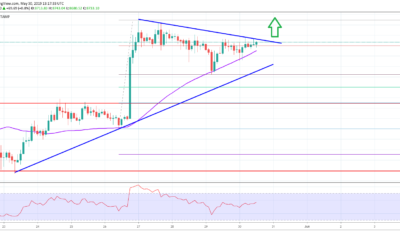

After a minor downside correction, bitcoin price jumped back above the $8,640 resistance area. BTC to USD seems to be setting the stage for more upsides...
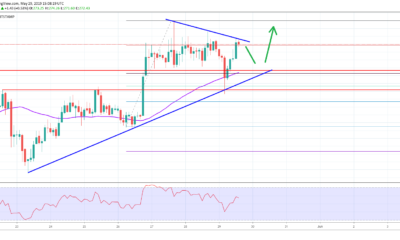

Recently, there was a sharp dip in bitcoin and Ethereum. ETH/USD declined below the $265.00 support area, but the $258.00 area acted as a strong buy...


Btc.com and BTC.top carries out a 51% attack on Bitcoin Cash network to stop an unknown miner BTC price down less than one percent only Two...
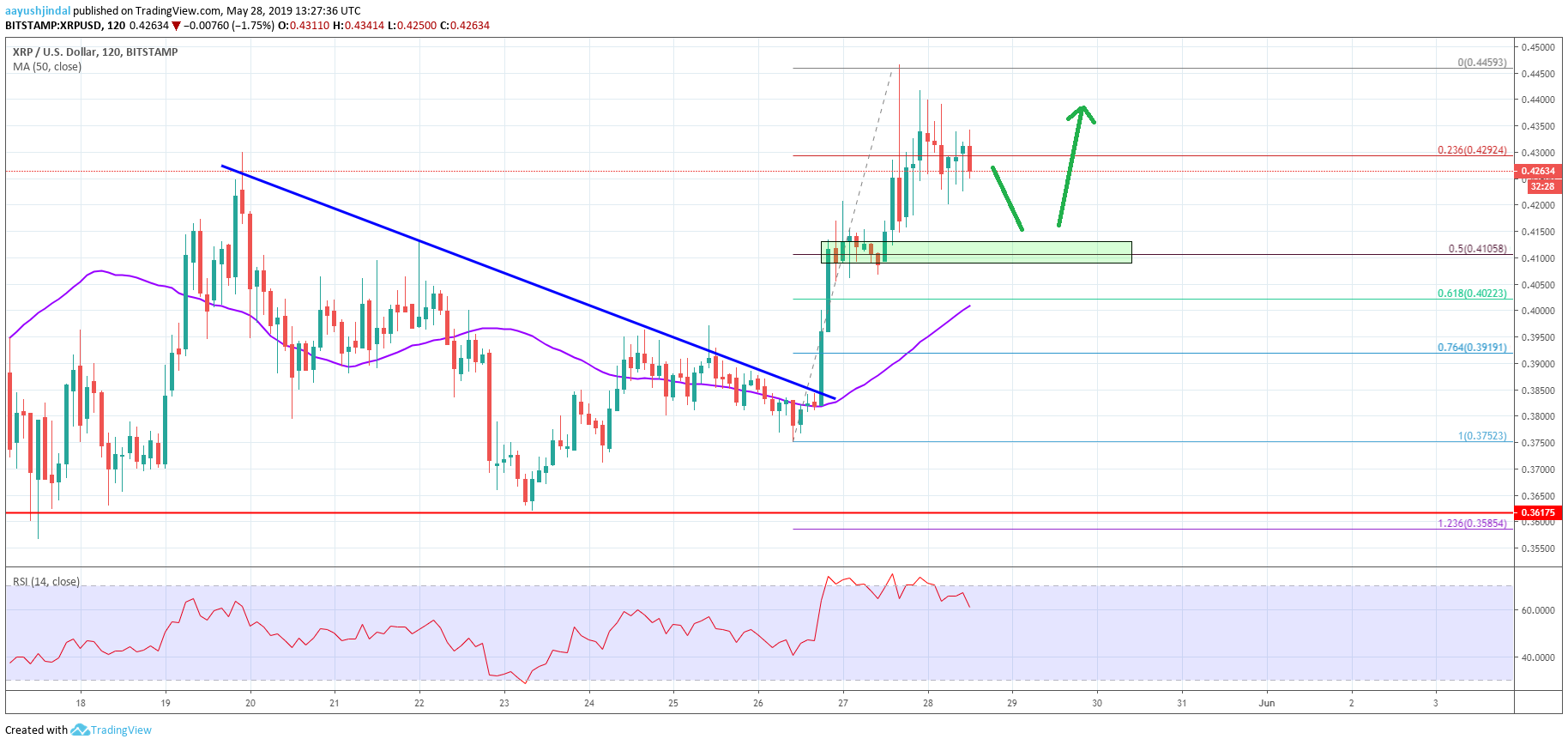
Ripple rallied in the past few hours above the $0.4100 resistance area. XRP to USD is currently correcting lower, but dips are likely present a golden...
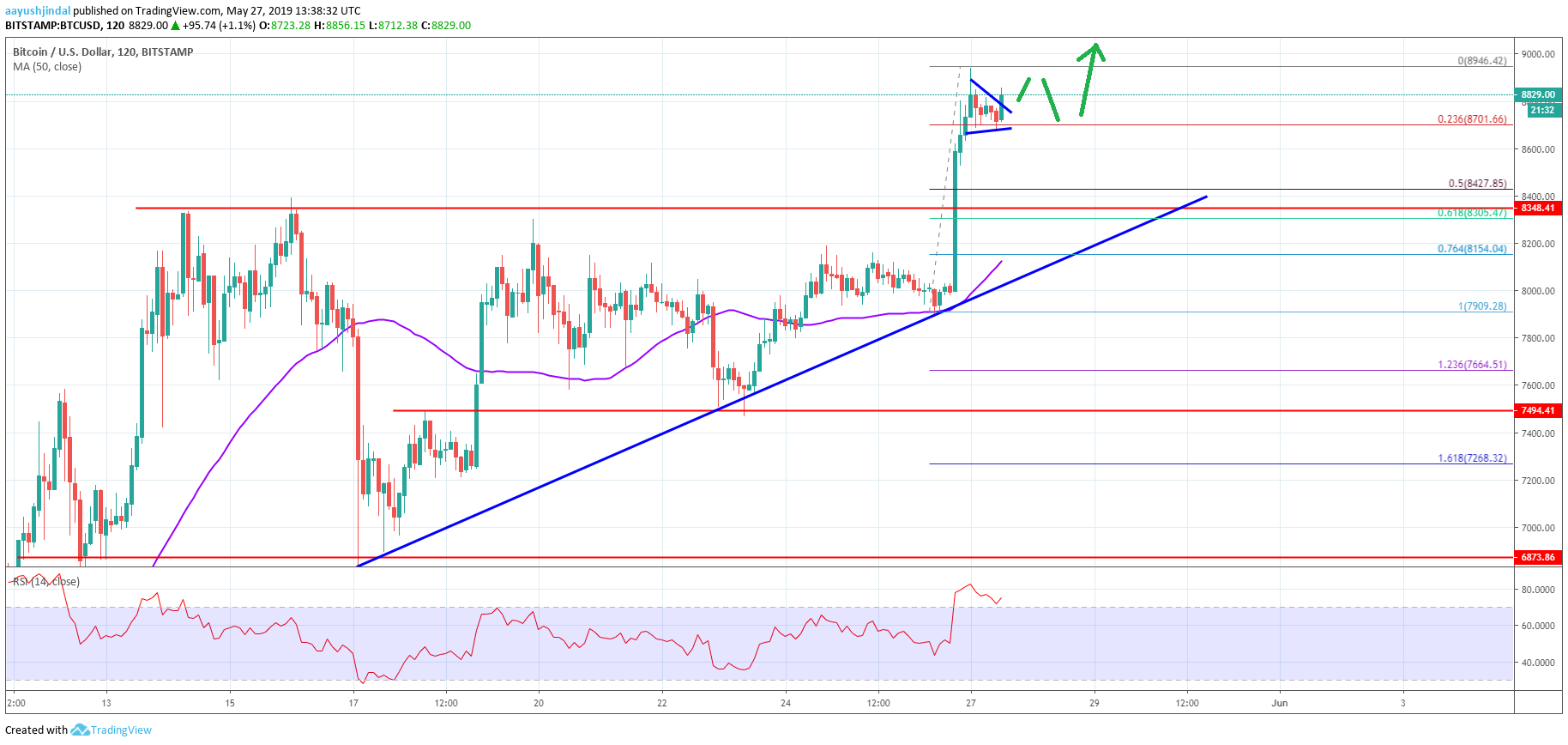
Finally, there was an upside break in bitcoin price above the $8,350 resistance area. BTC to USD surged above the $8,850 level and it is currently...
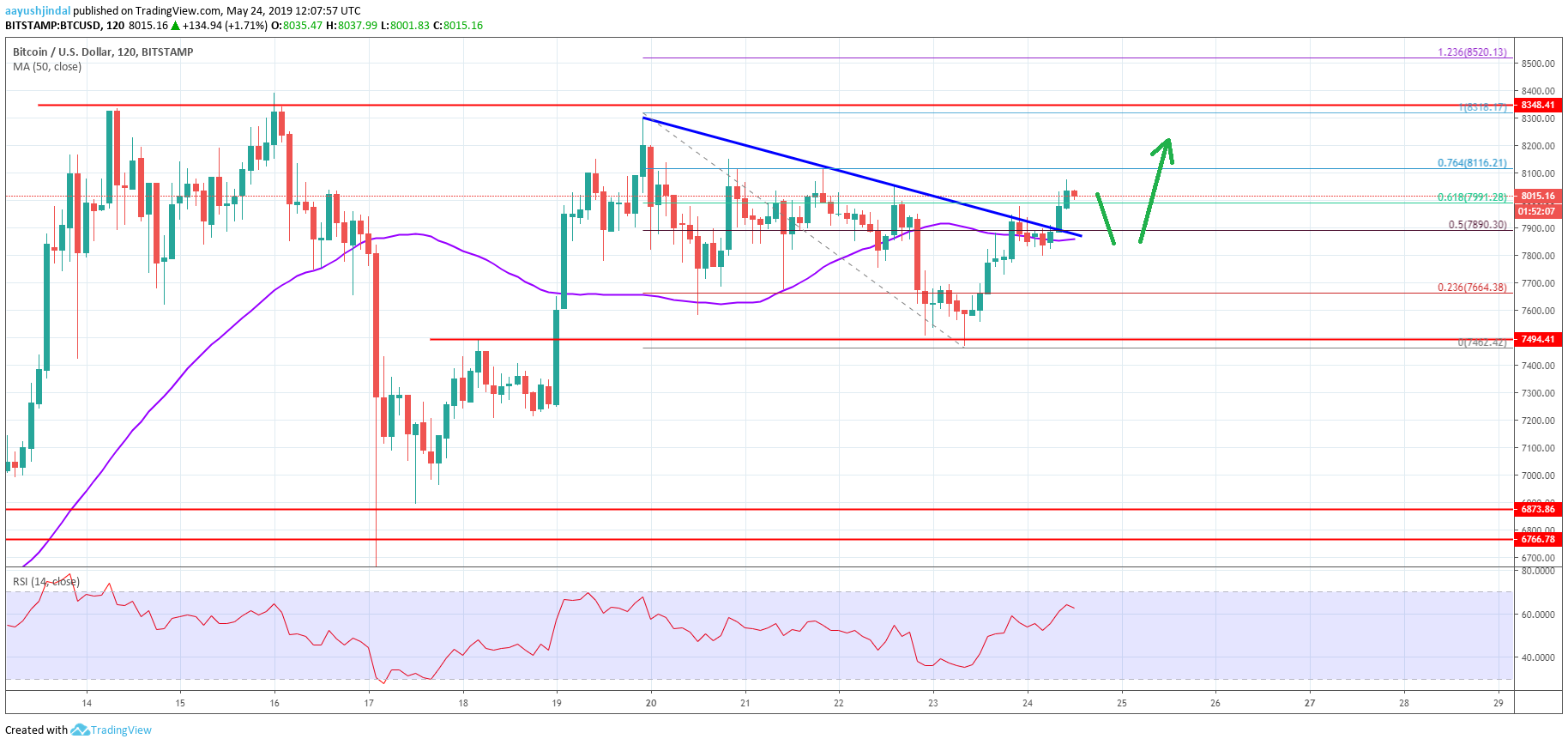
Recently, there was a downside correction in bitcoin price below the $7,650 support. BTC to USD tested the key $7,460 support level and started a fresh...
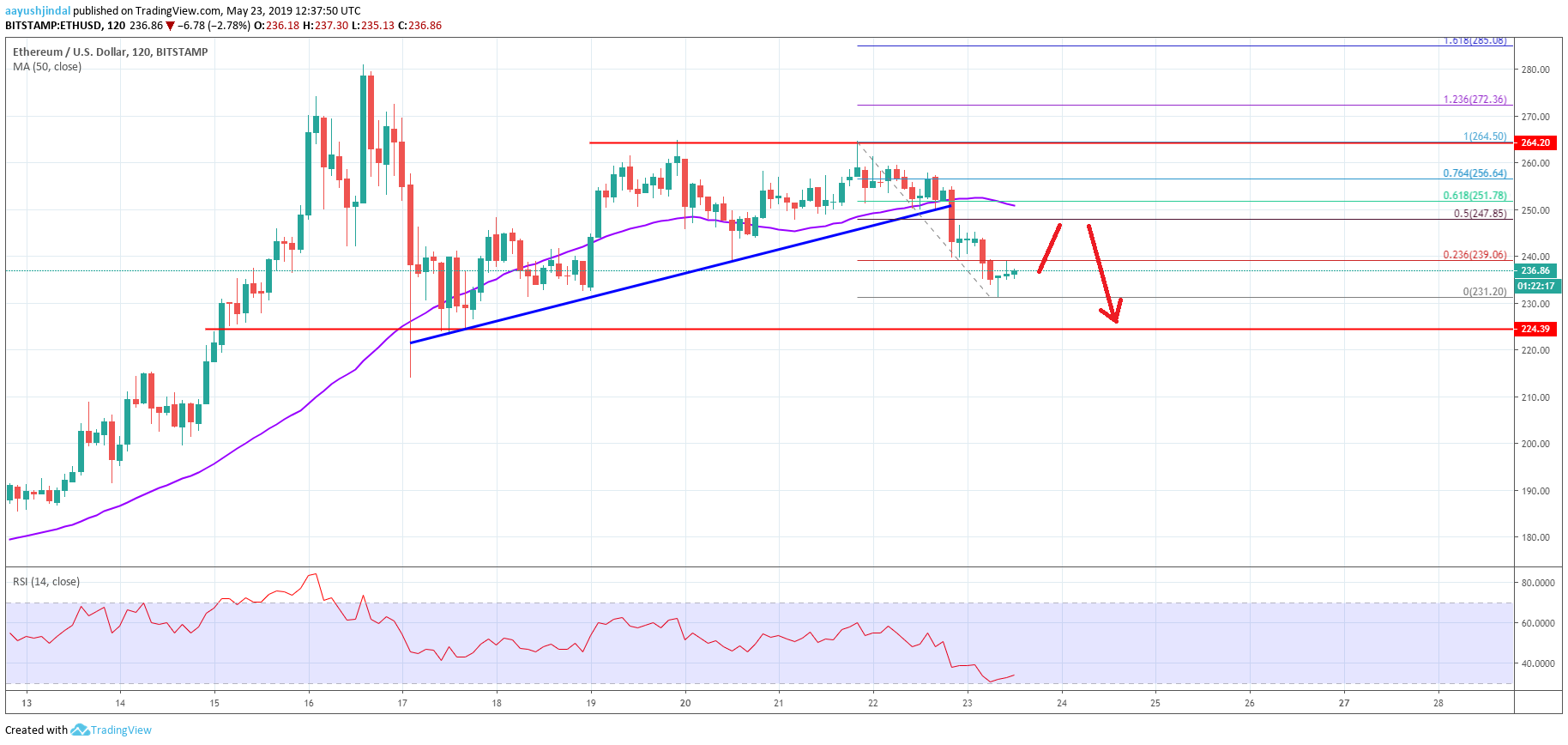
Recently, there was a sharp downside correction in bitcoin and Ethereum. ETH/USD declined below the $250.00 support level and it seems like the price could even...
 Bitcoin Price Starting to Recover After Sharp Drop; Top Alts Ethereum and Litecoin Are Struggling
Bitcoin Price Starting to Recover After Sharp Drop; Top Alts Ethereum and Litecoin Are Struggling Bitcoin (BTC), Ethereum (ETH), and Litecoin (LTC) Price Prediction for Today’s Top Cryptocurrencies
Bitcoin (BTC), Ethereum (ETH), and Litecoin (LTC) Price Prediction for Today’s Top Cryptocurrencies Ripple Price Analysis: XRP/USD Primed For Further Gains
Ripple Price Analysis: XRP/USD Primed For Further Gains Bitcoin Price Analysis: BTC Surging, Next Stop Could Be $9,750
Bitcoin Price Analysis: BTC Surging, Next Stop Could Be $9,750 Ethereum Price Analysis: ETH Approaching Significant Support Area
Ethereum Price Analysis: ETH Approaching Significant Support Area Bitcoin Price Analysis: BTC Setting Up For Another Bull Run
Bitcoin Price Analysis: BTC Setting Up For Another Bull Run